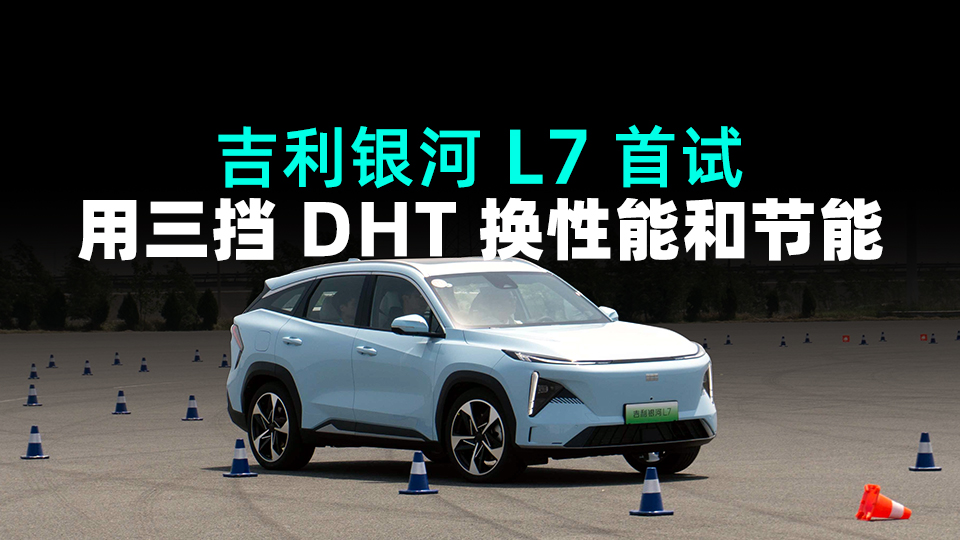In the 20th Shanghai Auto Show, two major trends were showcased: one is that car companies are fully transitioning to electrification and digitization, and the other is the continued popularity of hybrid products.
From the user’s perspective, new energy vehicles have obvious advantages over traditional gasoline cars in urban environments, so the signal to seize the gasoline car market is clear. However, pure electric vehicles still have noticeable inconveniences in terms of range and recharging. Therefore, hybrids without range and recharging anxiety are taking the baton from pure electric and gasoline markets at the same time.
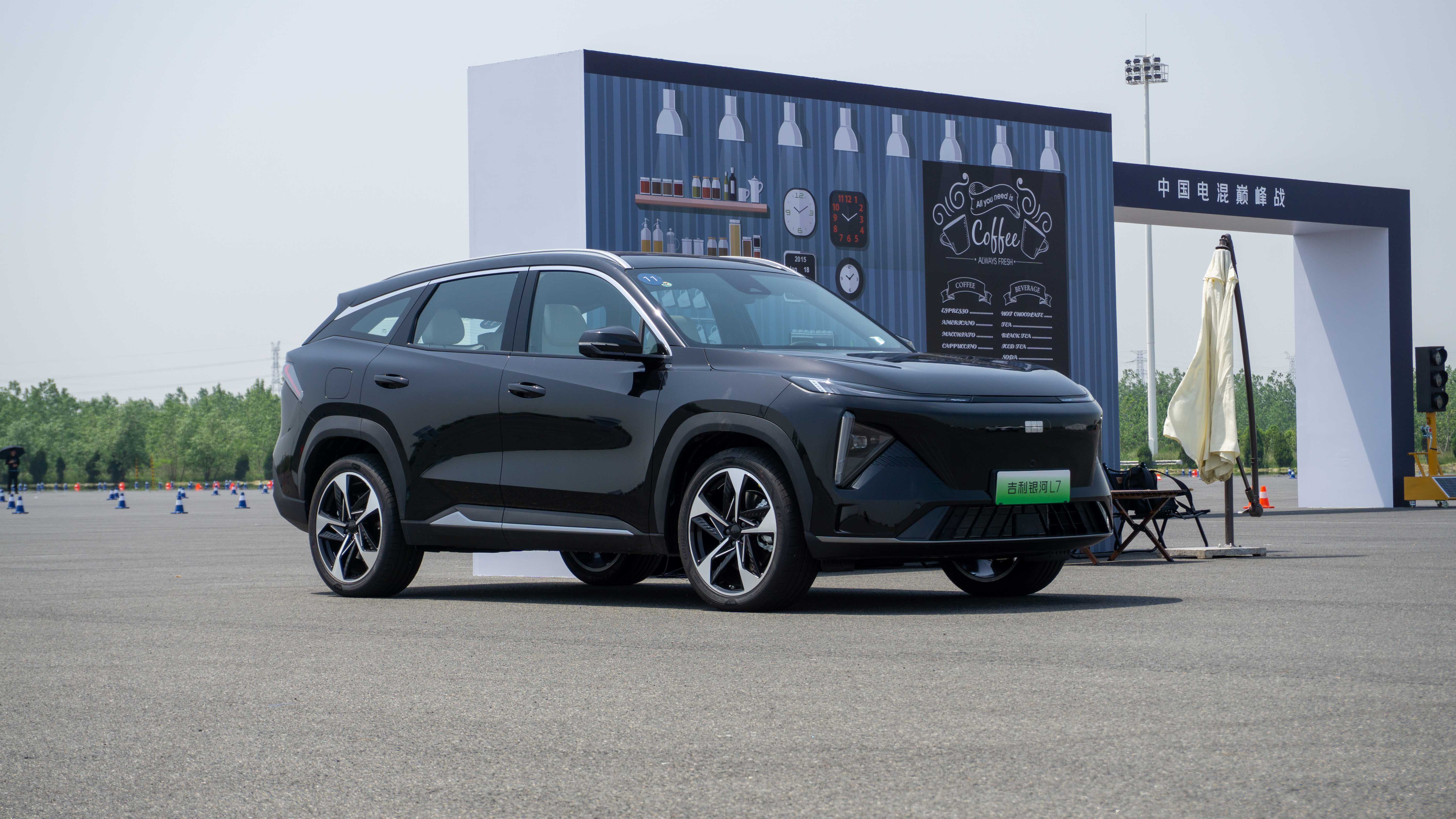
Looking at the sales of new vehicles in 2022, the market between 100,000 and 200,000 is still occupied by gasoline vehicles. However, this year’s main price segment’s new models are constantly increasing, such as the new BYD Song PLUS and Changan DEEPAL S7. In Geely’s strategy, the Galaxy L7, a plug-in hybrid vehicle positioned as a Class A model and the first model of the entire Galaxy family, shoulders significant expectations.
The Galaxy L7 is expected to start deliveries as early as the first half of this year, and today, before the official delivery, we took a test drive of the Galaxy L7 at the CIRI Automotive Test Center in Yancheng, Jiangsu, China. In this article, we will analyze the vehicle from driving experience, space, and appearance perspectives, answering the question: How good is the Galaxy L7 for a 200,000 budget hybrid?
Performance or Energy Efficiency?
The Geely Galaxy L7, as a plug-in hybrid model, received great attention on the power system during its first test drive experience. The Galaxy L7 is equipped with an e-CMA intelligent electric hybrid architecture and the new generation Thor electric drive DHT Pro hybrid system. However, structurally, it remains consistent with existing models from Geely.
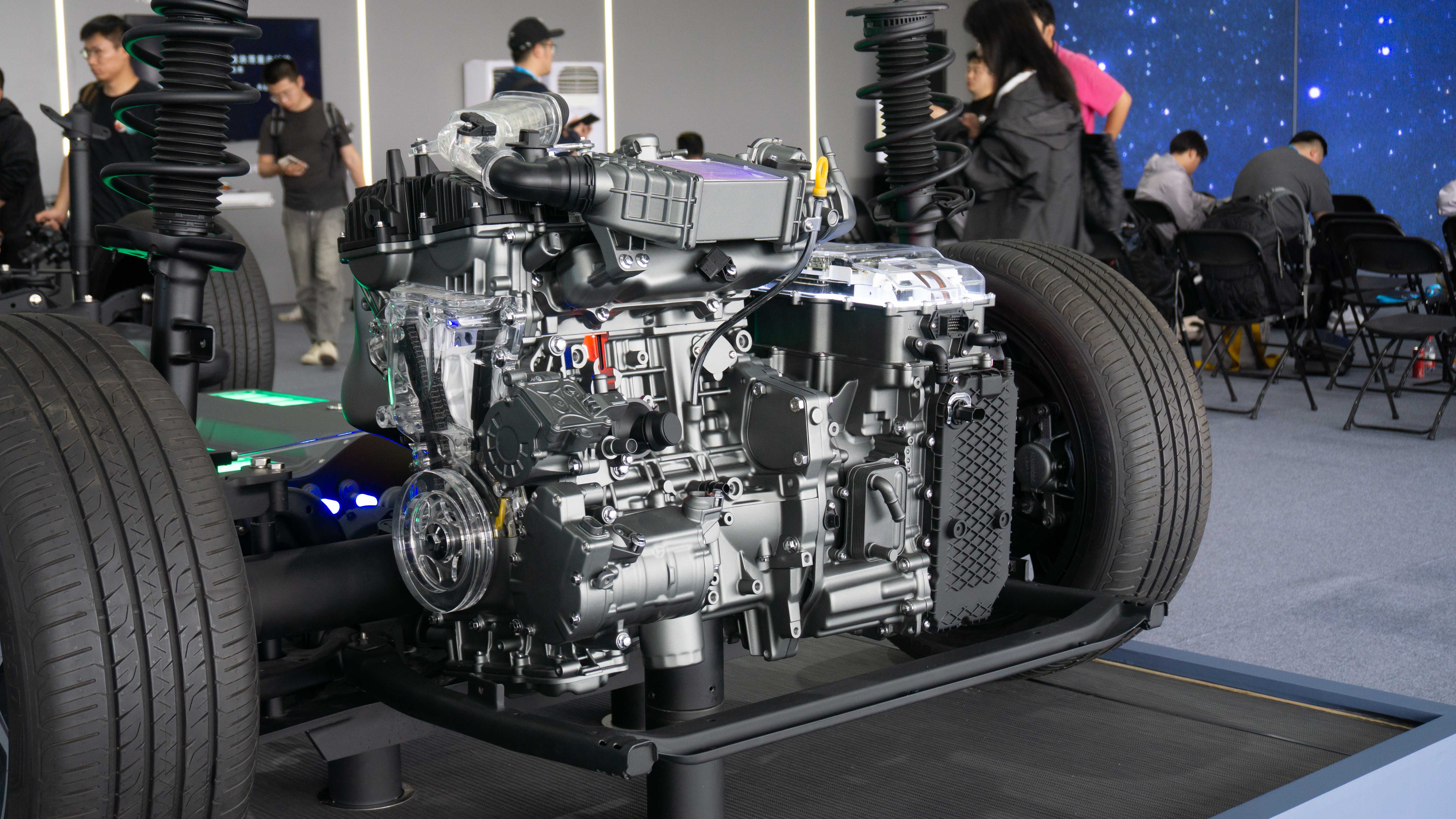
The new generation Thor electric hybrid 1.5T B-plus engine has a maximum power of 120 kW and a maximum torque of 255 N·m. It is matched with a P1 motor with a maximum power of 60 kW and a P2 motor with a maximum power of 107 kW. In this system, the P1 motor can drive the vehicle together with the P2 motor. The vehicle’s combined maximum power is 287 kW, and the overall system’s maximum torque is 535 N·m, which is quite stunning in terms of data.
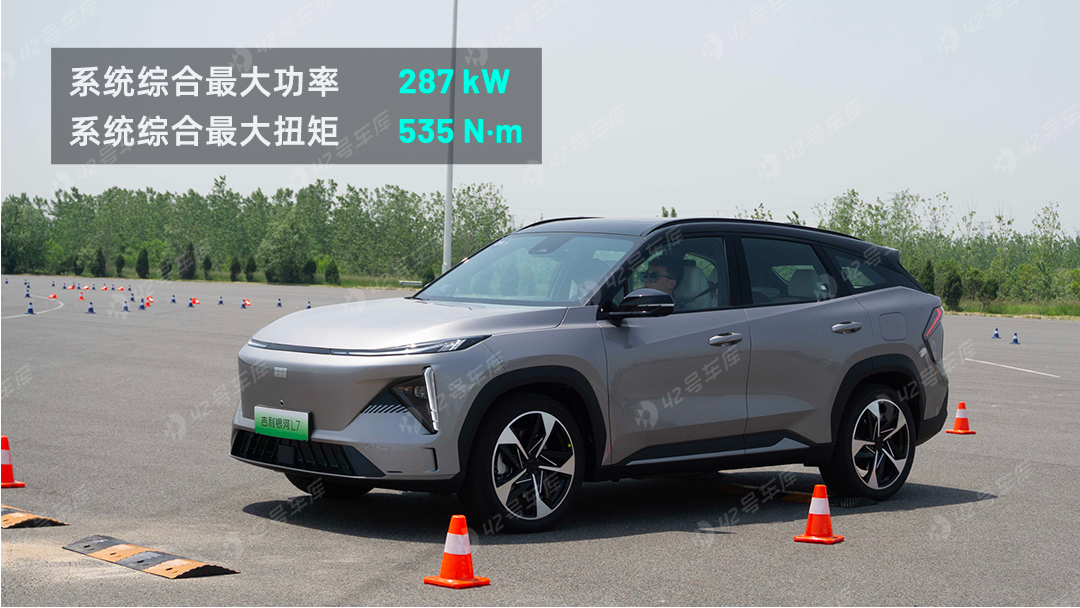
At the same time, the Galaxy L7’s power is transmitted through 3 DHT Pro. The first gear can start with C0 slip friction slingshot, and when the speed reaches 20km/h or above, it can enter parallel drive to provide maximum power output.
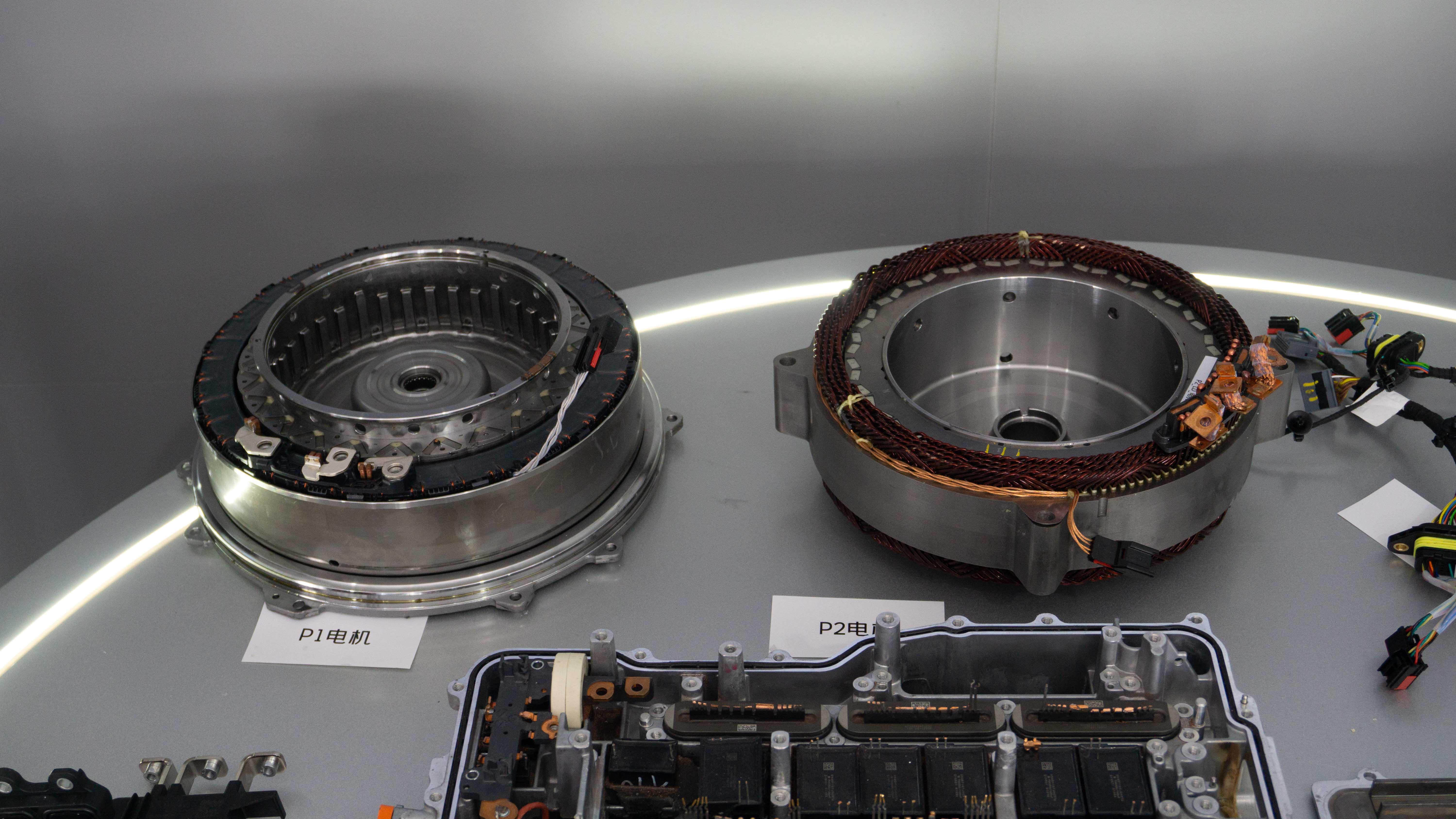 Our on-site test (with SOC over 85%) showed that the Galaxy L7 can accelerate from 0 to 100 km/h in 6.7 seconds.
Our on-site test (with SOC over 85%) showed that the Galaxy L7 can accelerate from 0 to 100 km/h in 6.7 seconds.
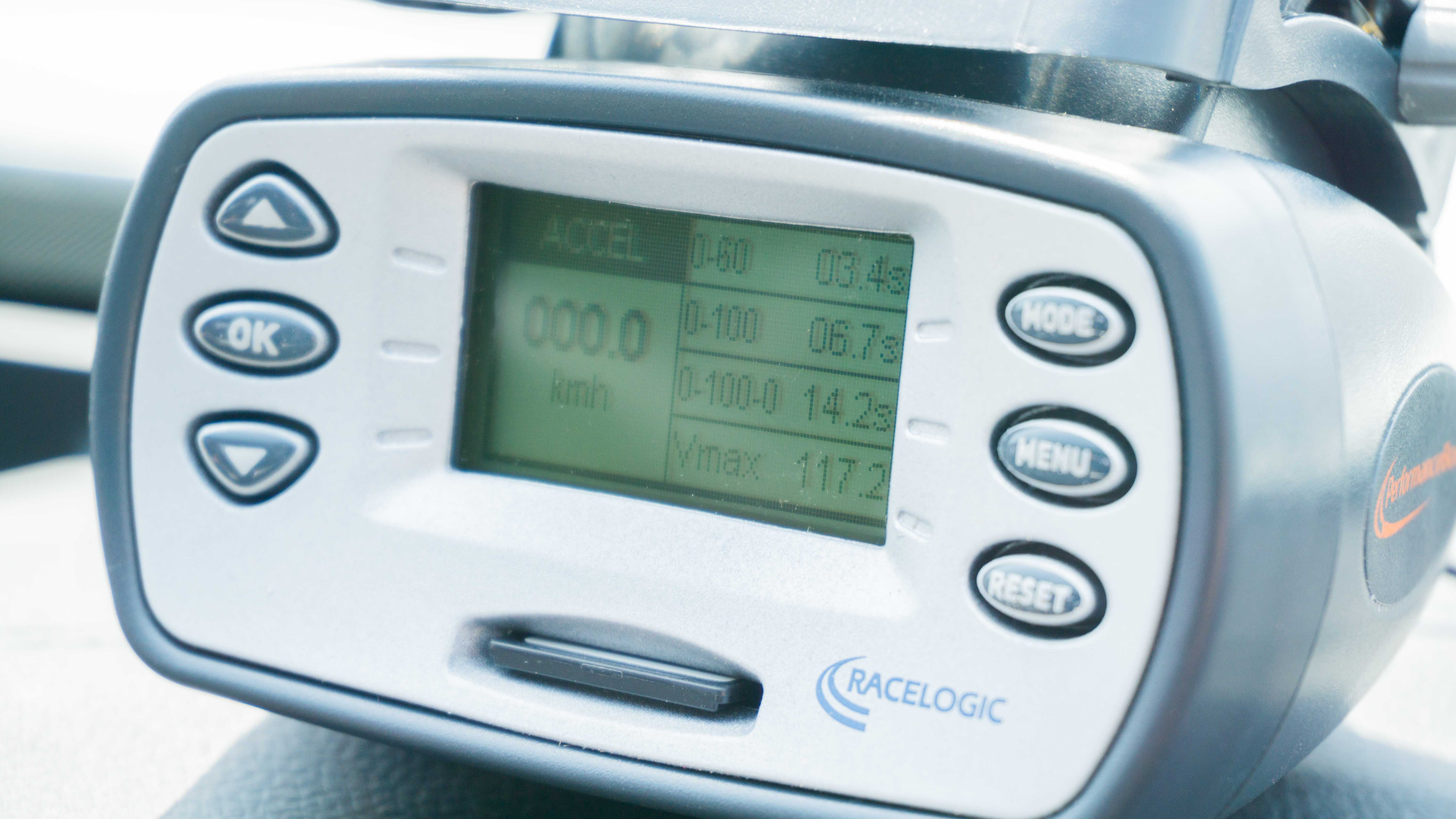
Even with 245-width Goodyear EAGLE F1 tires, the wheels still slip slightly at the start. With further tire upgrades, even better acceleration results can be achieved.
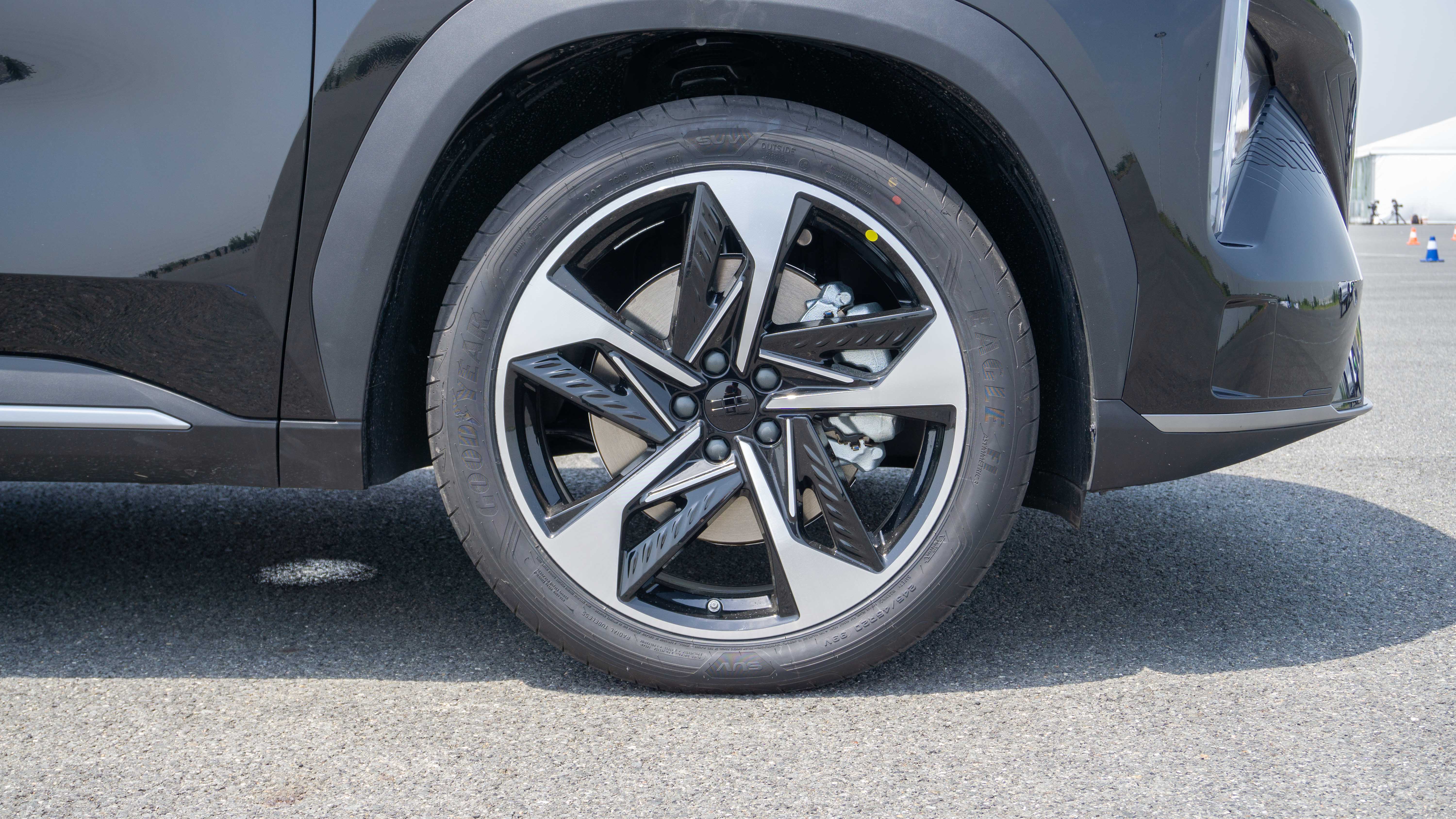
When the vehicle is accelerating at full power and reaches a speed of about 80 km/h, it produces an impactful, gear-shifting sensation similar to an AT gearbox, with a distinct and powerful feeling and a quick transition, adding some mechanical pleasure. At this point, the 3 DHT Pro switches to 2nd gear, putting the engine in a more efficient working range through generator adjustments.
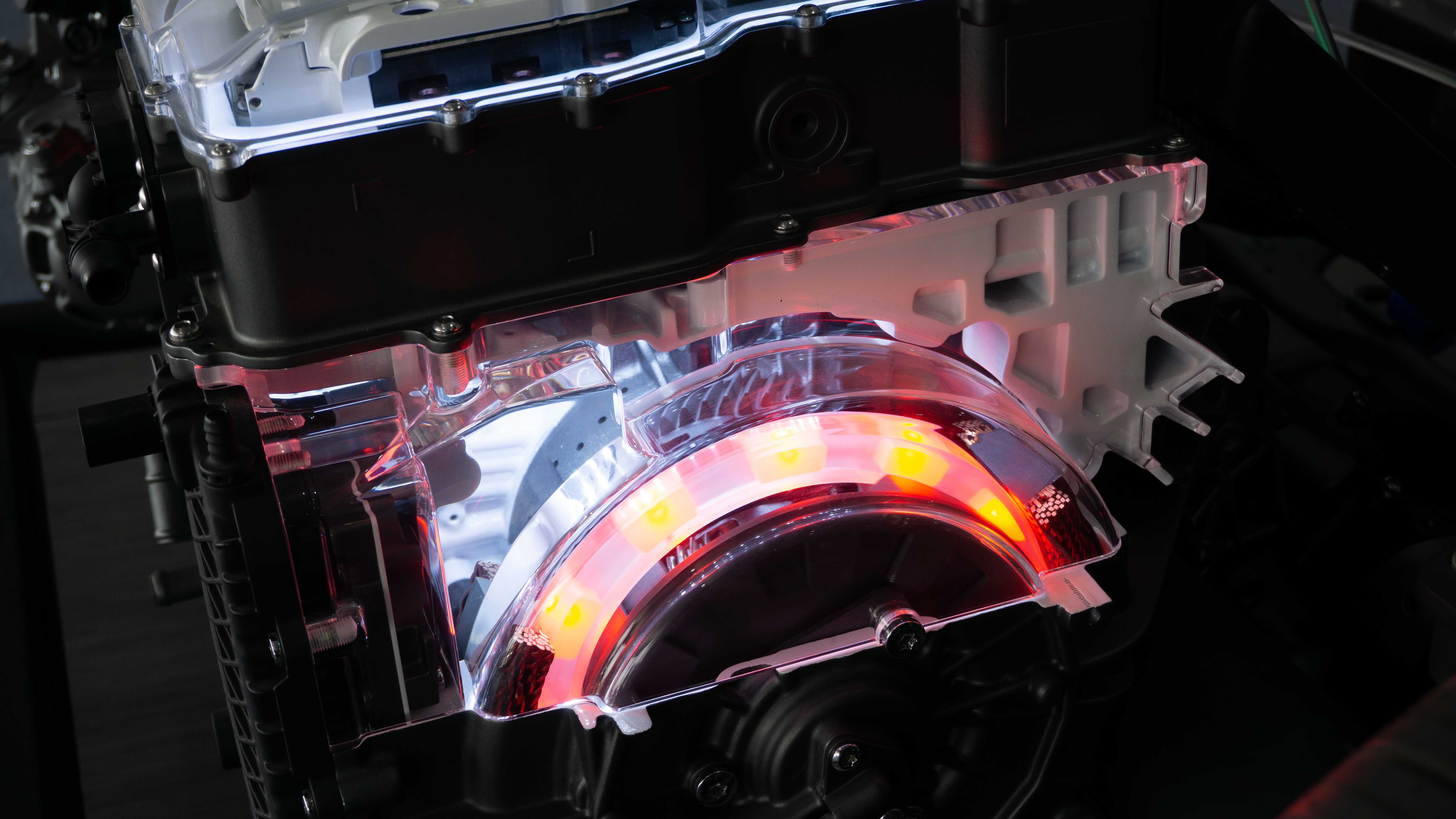
Under gentle driving, gear shifts are smooth, and when the vehicle is cruising at high speeds, it will automatically shift to 3rd gear, allowing the engine to drive the wheels directly for low fuel consumption.
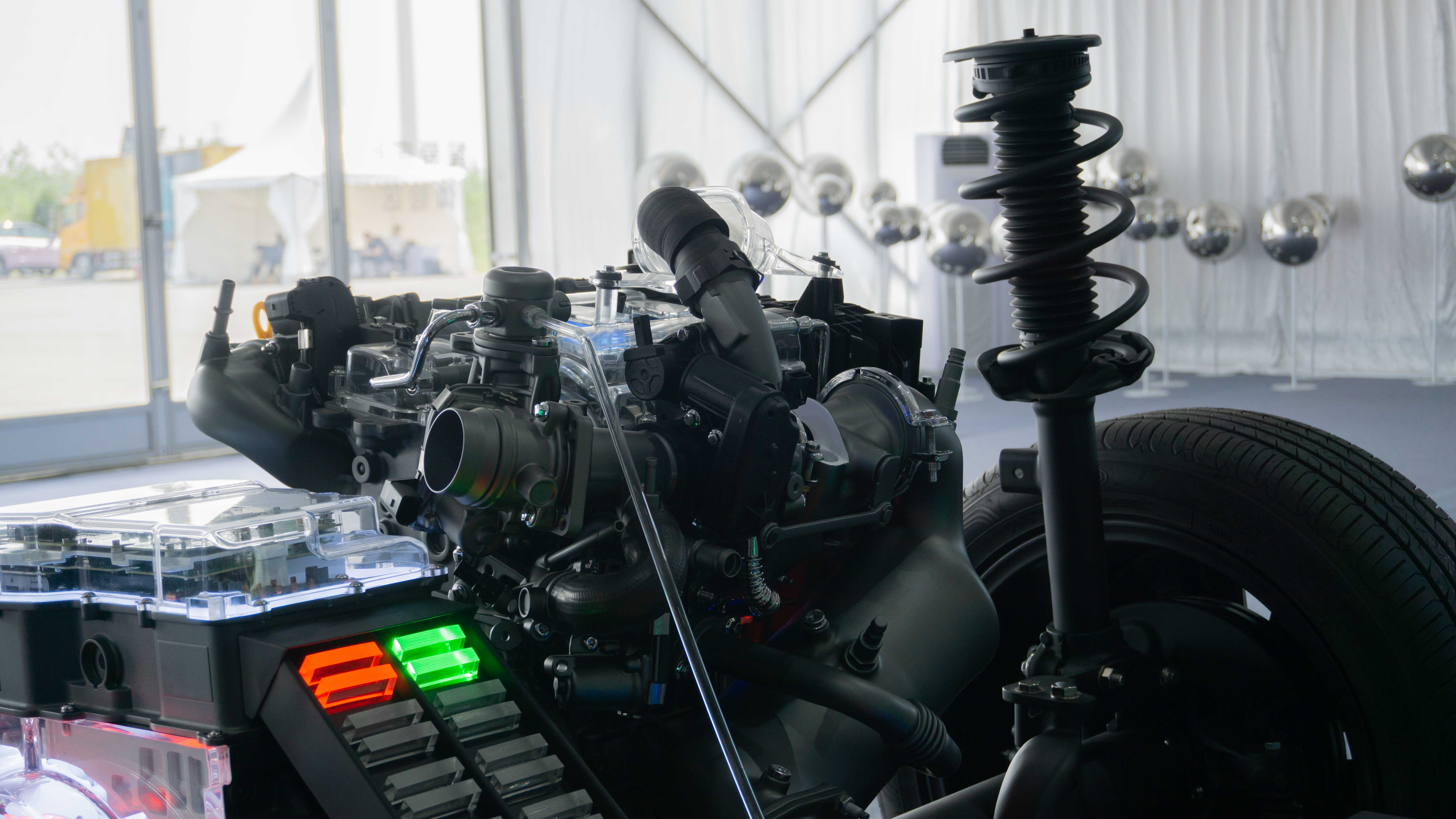
It must be noted that the 6.7-second acceleration can only be achieved when the battery SOC is above 85%. In the latter half of our test drive, as the SOC was continuously in the charging state, the Galaxy L7’s full acceleration was noticeably weaker, with a 1-2 second reduction.
Moving on to braking distance, all four tires of the Geely Galaxy L7 are fitted with Goodyear EAGLE F1 tires, which strike a good balance between grip and low rolling resistance. During a 100-0 km/h braking test, the Galaxy L7 required only 36.8 m to come to a complete stop, a relatively outstanding performance among compact SUVs.
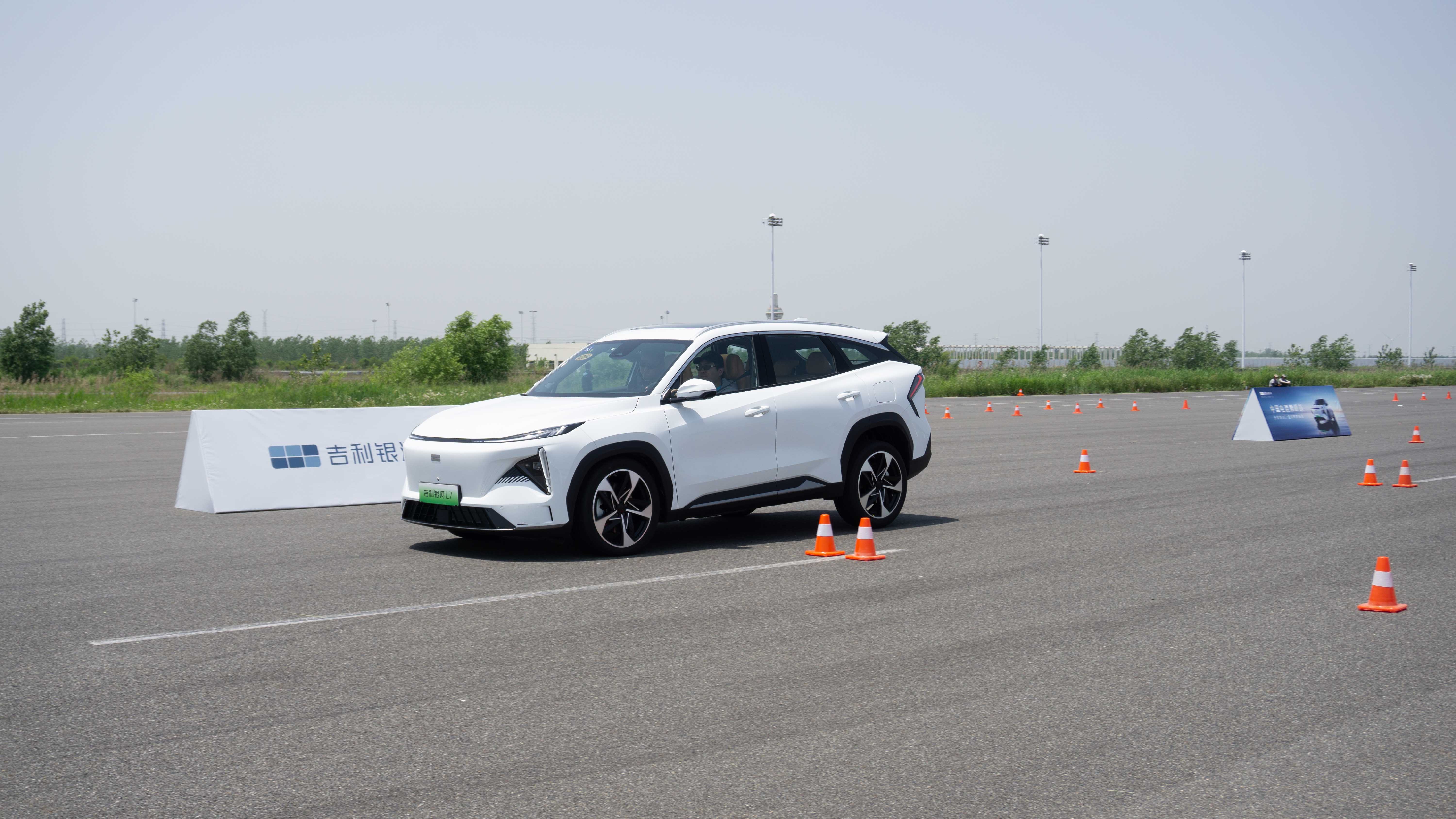
During braking, the Galaxy L7 has an even distribution of braking force, and the braking intensity is sufficient to give drivers confidence. From an external perspective, the braking posture control of the Galaxy L7 is fairly decent. Due to the longer front suspension travel, there is a slight nodding motion, though it is not very noticeable inside the vehicle.
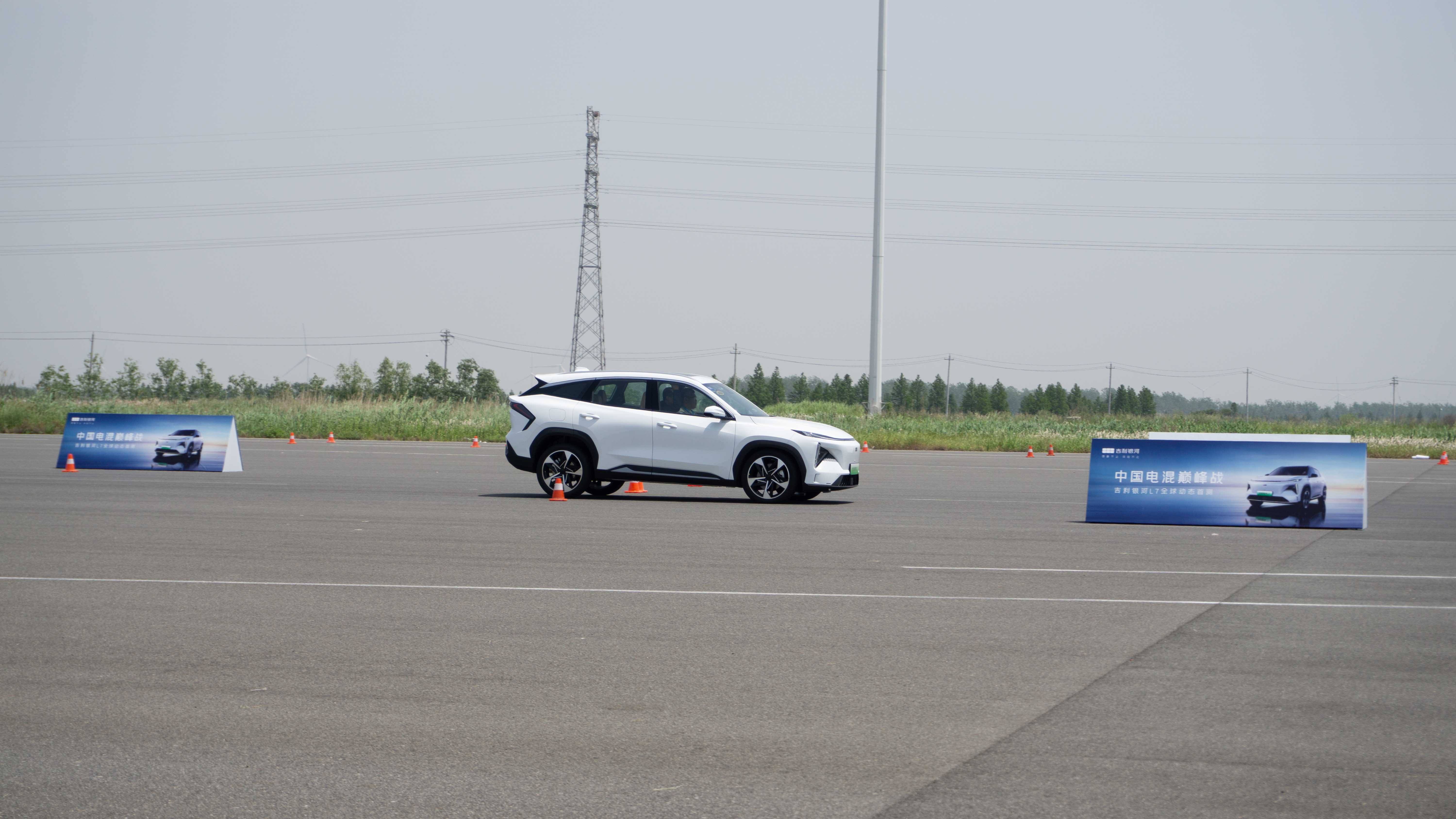 In daily driving, besides performance, energy consumption is also an important factor when choosing a car. The Galaxy L7 features 4 driving modes: pure electric, range extender, smart, and performance. The smart mode is the most worry-free option, as the vehicle will determine the driver’s intent and switch between 20 different conditions including series, parallel, and hybrid connections.
In daily driving, besides performance, energy consumption is also an important factor when choosing a car. The Galaxy L7 features 4 driving modes: pure electric, range extender, smart, and performance. The smart mode is the most worry-free option, as the vehicle will determine the driver’s intent and switch between 20 different conditions including series, parallel, and hybrid connections.
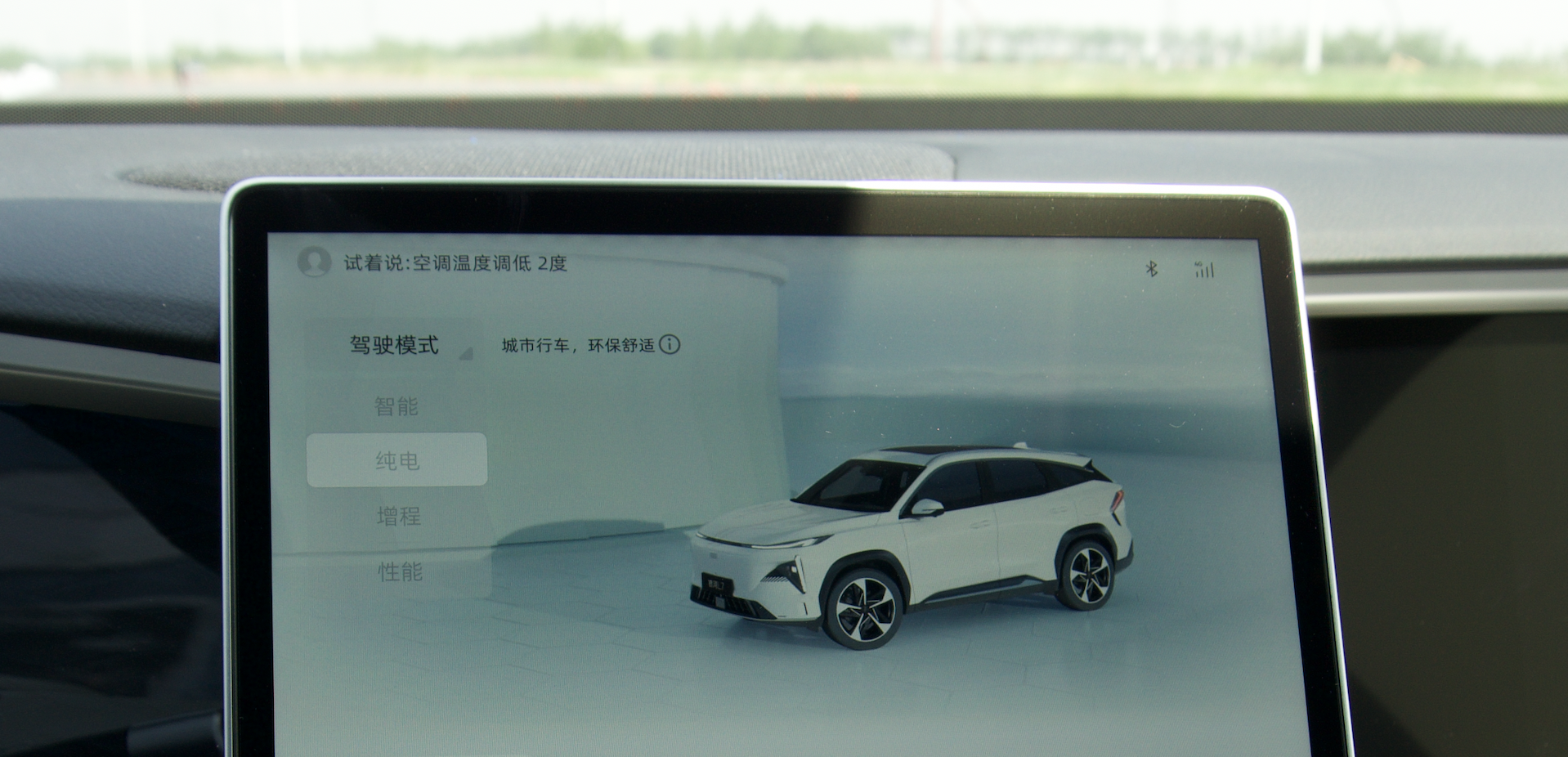
According to Geely’s official data, the B-Plus engine’s thermal efficiency can reach 44.26%, while the Galaxy L7’s WLTC fuel consumption is only 5.23 L/100 km, and the CLTC combined range can reach 1,370 km.
Unfortunately, this test drive was limited to the track, so the energy consumption under continuous intense driving wasn’t indicative. When actual road test drives become available, we will further test the Galaxy L7’s energy consumption performance.
Performance Mode = Turbocharged?
During this track test drive, we also tried out thevehicle’s agility in the Gymkhana test. The Galaxy L7 displayed good body roll control during continuous low-speed sharp turns, with a compact center of gravity transfer, almost linearly increasing with the steering angle, leaning towards the tuning style of European SUVs.

In performance mode, the Galaxy L7’s steering torque is relatively heavy, requiring both hands to steer. The steering feel is excellent, with some dead space retained to ensure driving comfort in daily use. In the Gymkhana’s U-shaped bend, I found that the Galaxy L7’s steering wheel was not eager to return to its neutral position, similar to many performance-focused cars, still offering a sporty feel.
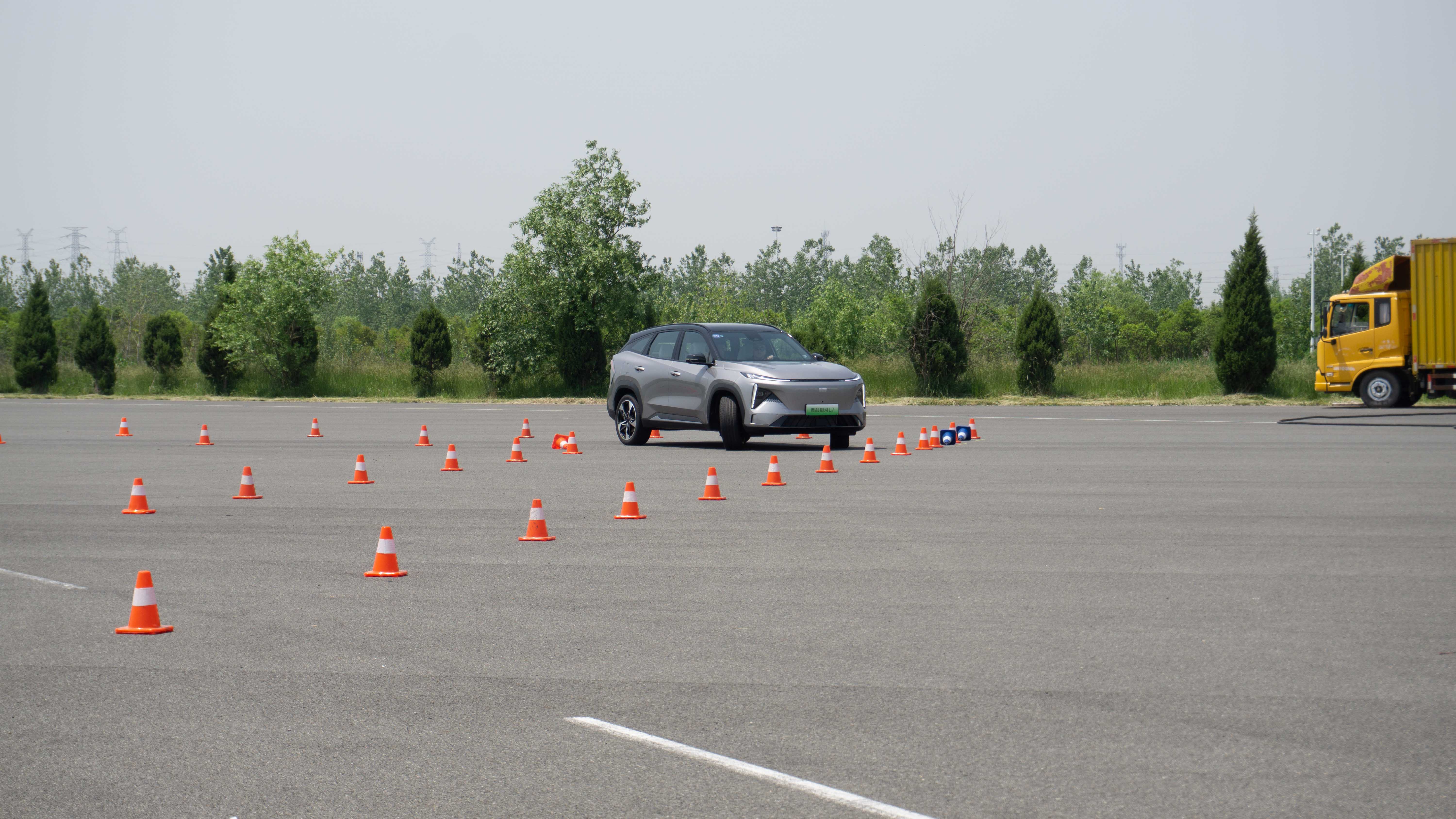
However, in performance mode, the Galaxy L7’s accelerator pedal calibration is overly sensitive, delivering power almost instantly, as if turbocharged. This makes it challenging to control speed in small bends like the Gymkhana, although the mode readily provides 100% power output when needed. I also tried the acceleration feedback in smart mode, which showed no issues with responsiveness or linearity.
Harsh Road Conditions
On the simulated city road surface at the track, we experienced common road obstacles such as speed bumps, uneven joints, sunken road surfaces, and gravel roads.
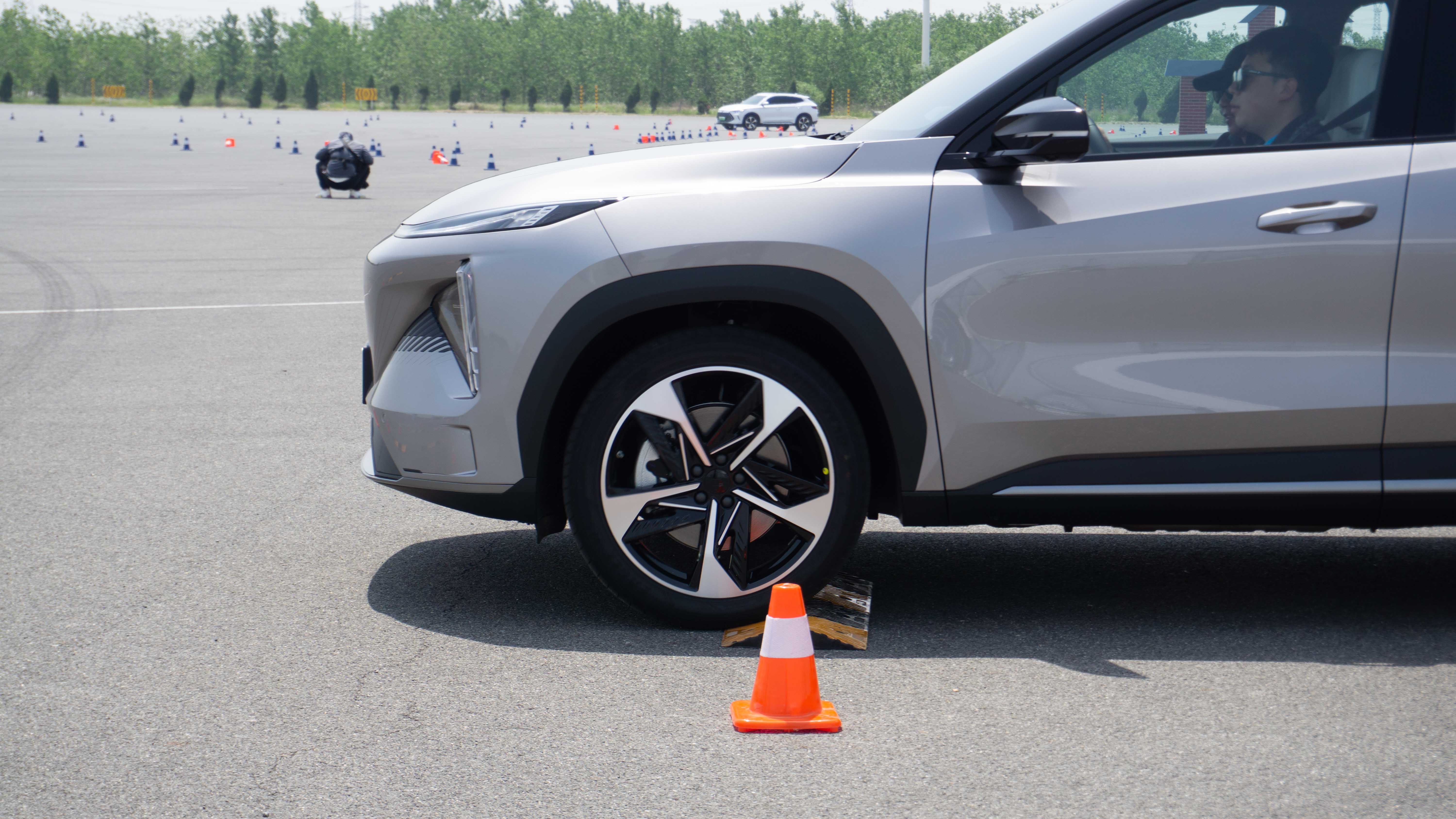 Passing a speed bump at 20 km/h, the Galaxy L7 has a suspension that mimics the style of European cars, not completely absorbing the bump but maintaining some bounce. The rear axle of the Galaxy L7 has a more pronounced bounce than the front axle, allowing the driver to feel the good followability and agility of the tail during maneuvers.
Passing a speed bump at 20 km/h, the Galaxy L7 has a suspension that mimics the style of European cars, not completely absorbing the bump but maintaining some bounce. The rear axle of the Galaxy L7 has a more pronounced bounce than the front axle, allowing the driver to feel the good followability and agility of the tail during maneuvers.

When driving on surfaces with a height difference of about 2 cm, the Galaxy L7 still provides a clear sense of road feel. When passing a high-low step at 60 km/h, the Galaxy L7 deals with it very efficiently, with no significant impact felt inside the vehicle.

At 80 km/h, the Galaxy L7 handles sunken road surfaces well, with the suspension supporting and stabilizing the vehicle as it enters and exits the dip. There is no excessive sway when the vehicle returns to level ground.
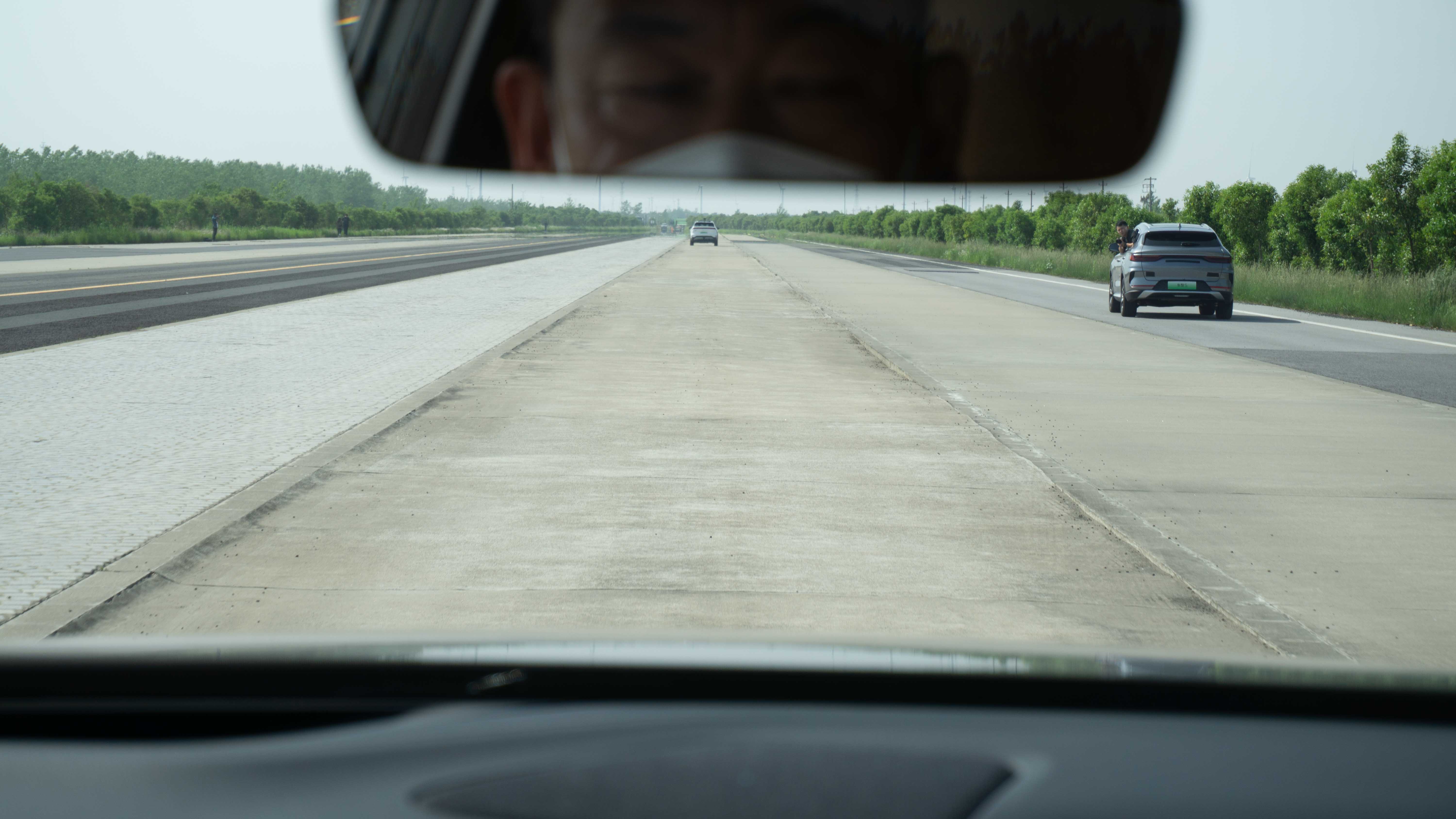
Lastly, driving on gravel surfaces tests the overall performance of the vehicle. The Galaxy L7 is able to filter out most direct impacts, but some high-frequency vibrations and road feel still find their way into the cabin. Nevertheless, the handling is resilient, providing a balance between comfort and road feel.
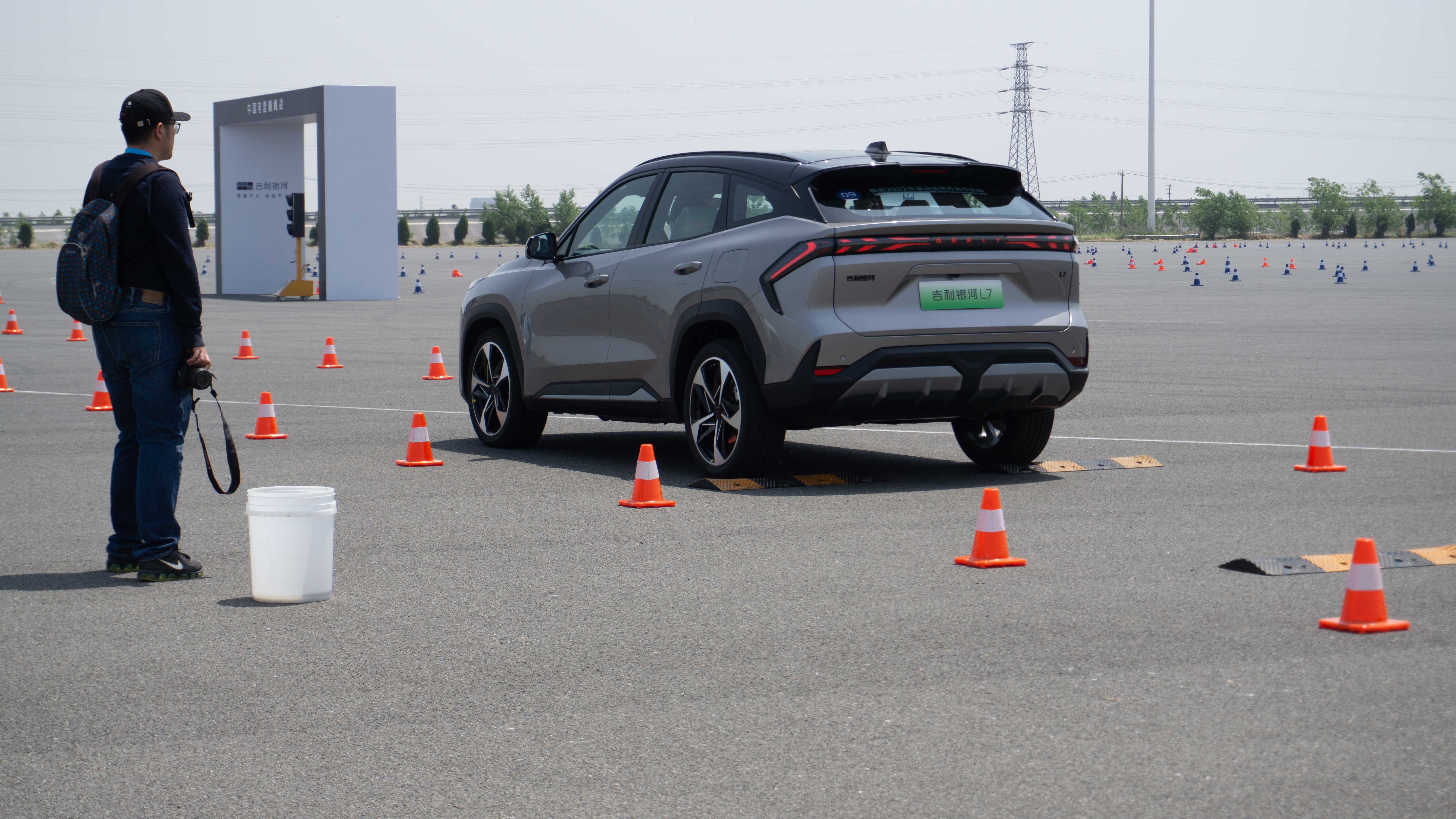
Overall, the Galaxy L7’s driving performance sets it apart from the conventional compact SUVs within the 200,000 price range. It pushes the boundaries in areas like performance, handling, and suspension, thus differentiating it from competitors in the same category.
Cabin Advantage
The Galaxy L7 not only excels in power and driving dynamics but also has an impressive cabin. The interior features a new “Galaxy Free Cabin” design concept, enhancing the sense of envelopment.

The vehicle we experienced uses a combination of black and white interior, creating a clean and minimalist visual effect. The infotainment system is composed of a 10.25-inch digital instrument panel, a 13.2-inch central control screen, a 16.2-inch co-pilot screen, and a 25.6-inch AR HUD.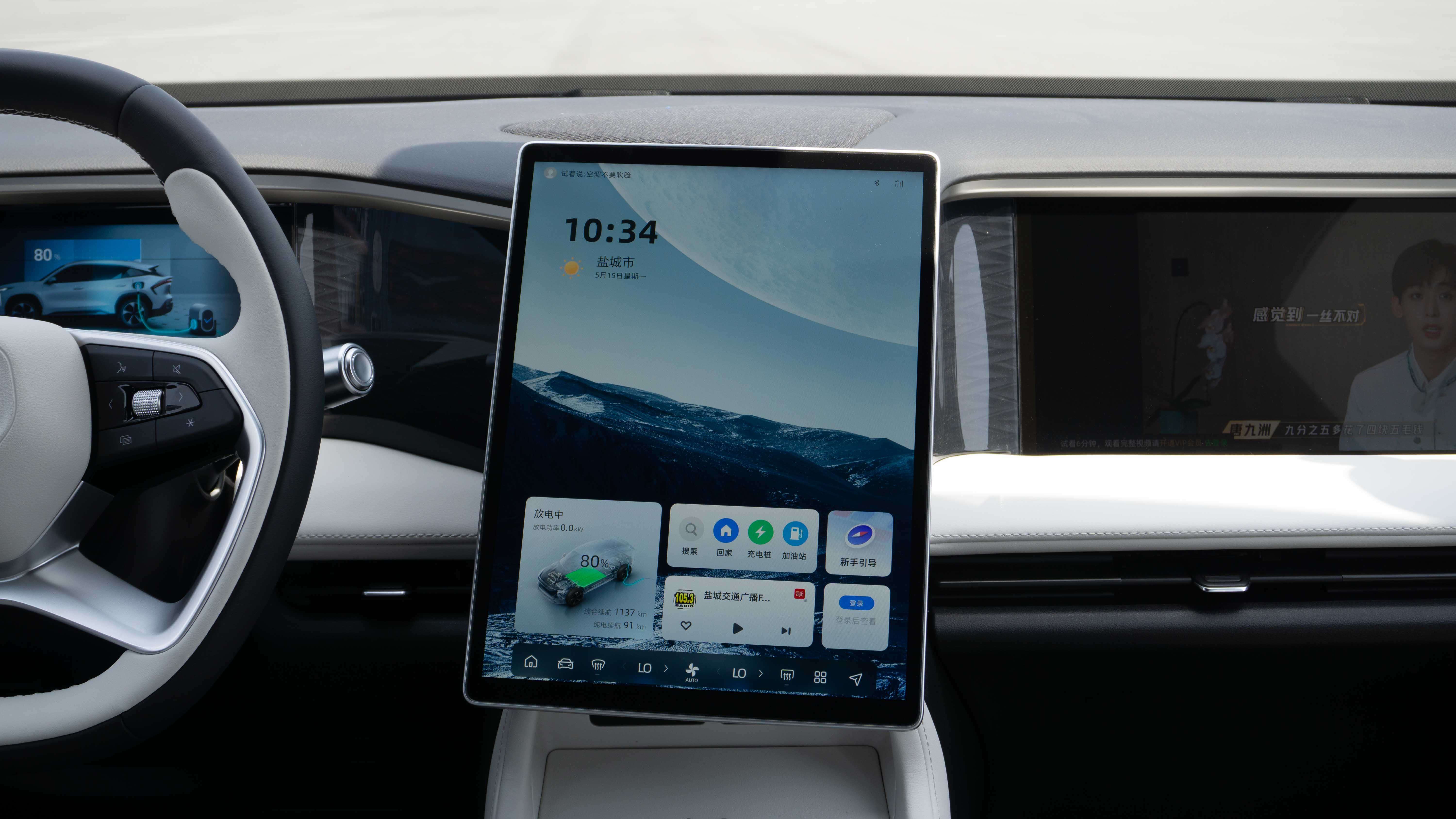
Equipped with the mainstream Snapdragon 8155 car chip, offering 128 GB of storage memory, and paired with the all-new Galaxy N OS. This 13.2-inch center console display is slightly tilted towards the driver’s side, providing an enveloping sense when viewed from the driver’s position.
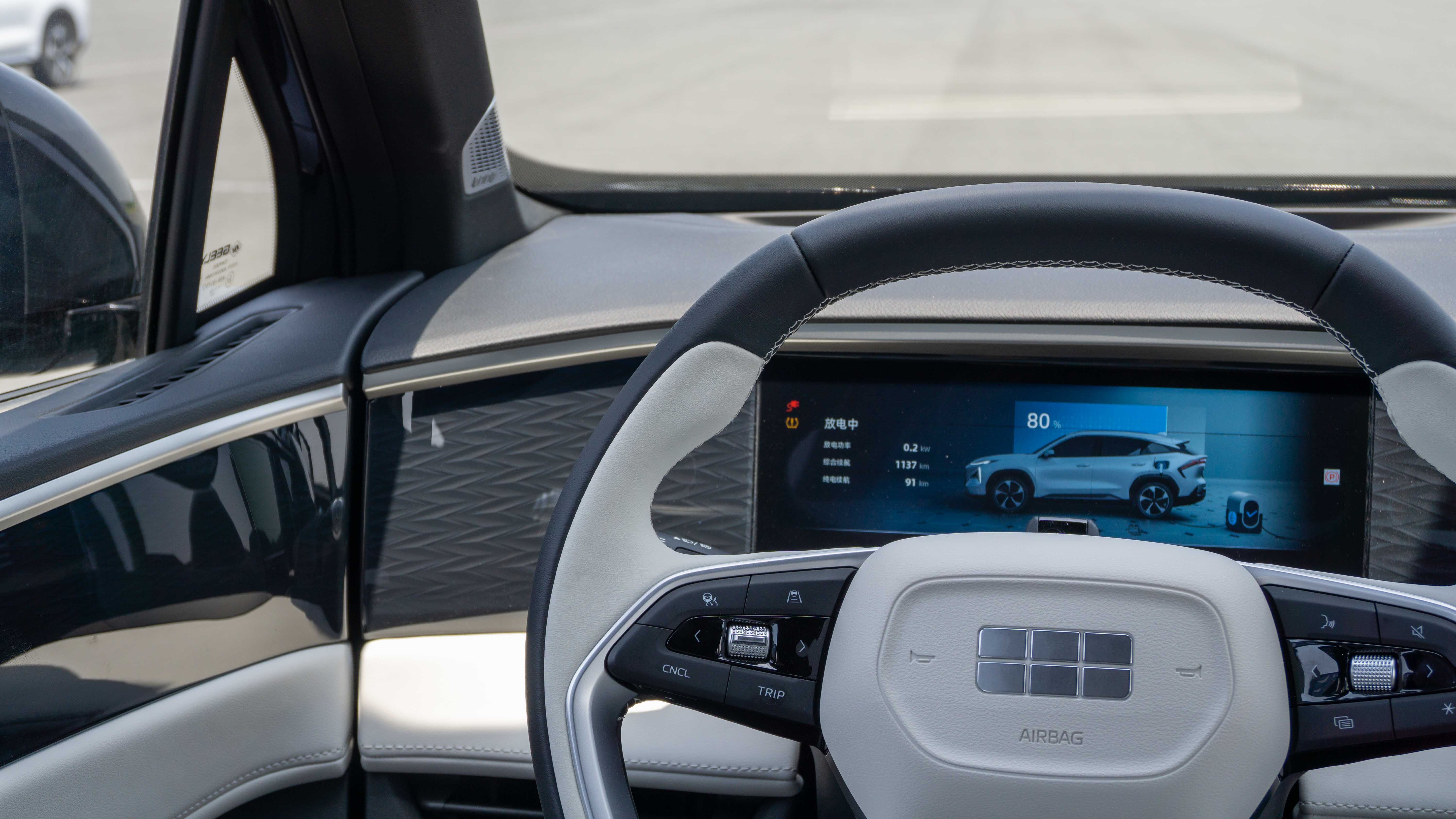
I personally find the interior trim of the Galaxy L7 quite appealing. With arrow-like patterns embedded within and covered by a layer of clear, smooth plastic, it strikes a balance between innovative design and not being overly flashy.

The area beneath the center console features a wireless charging panel that also comes with a thoughtfully placed air vent, ensuring that phones no longer overheat and lose more power than they gain while charging.
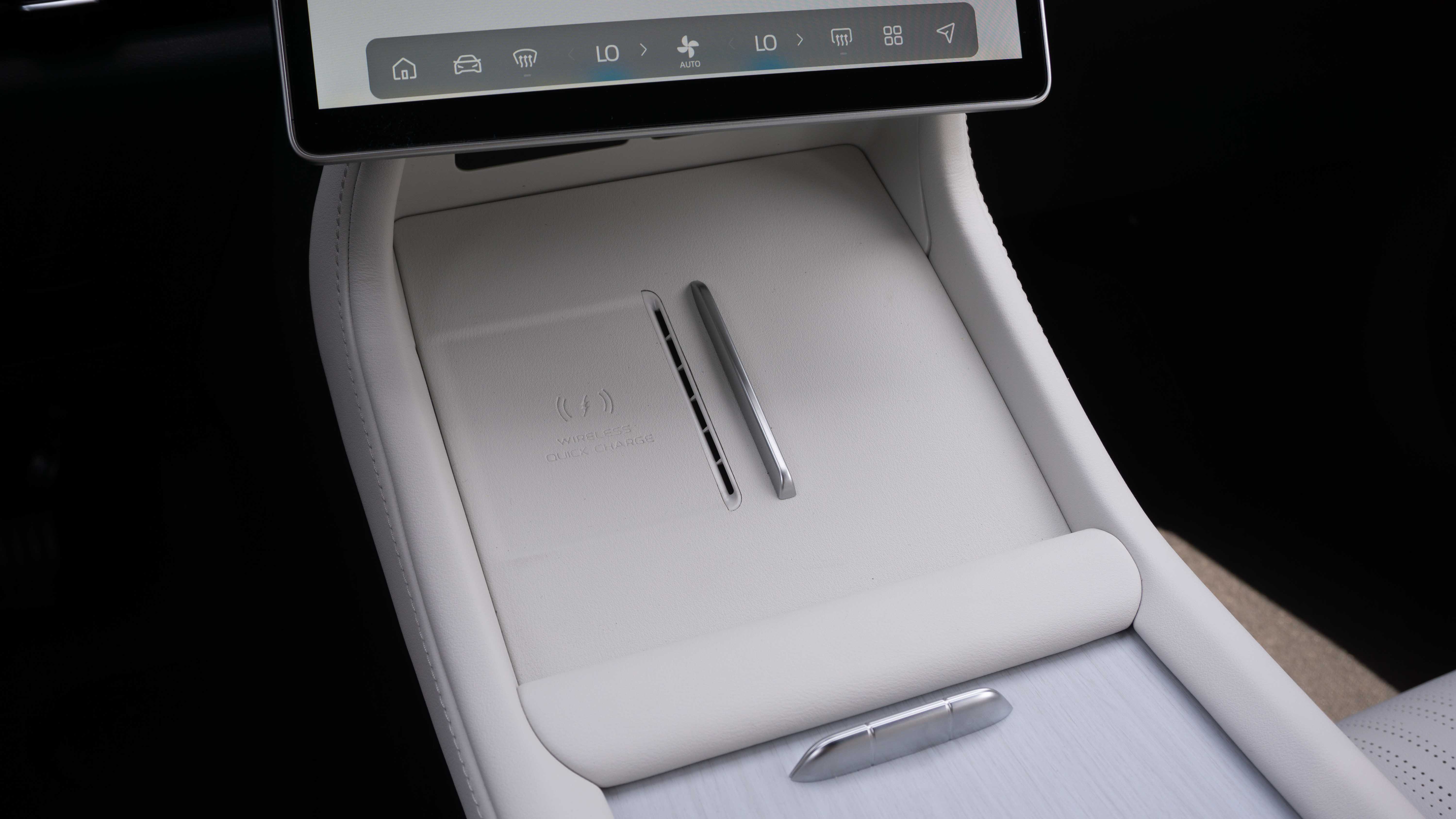
Below the rear cover are traditional cup holders and storage compartments. It’s worth mentioning that these cup holders can slide out of sight, allowing for more storage space underneath.
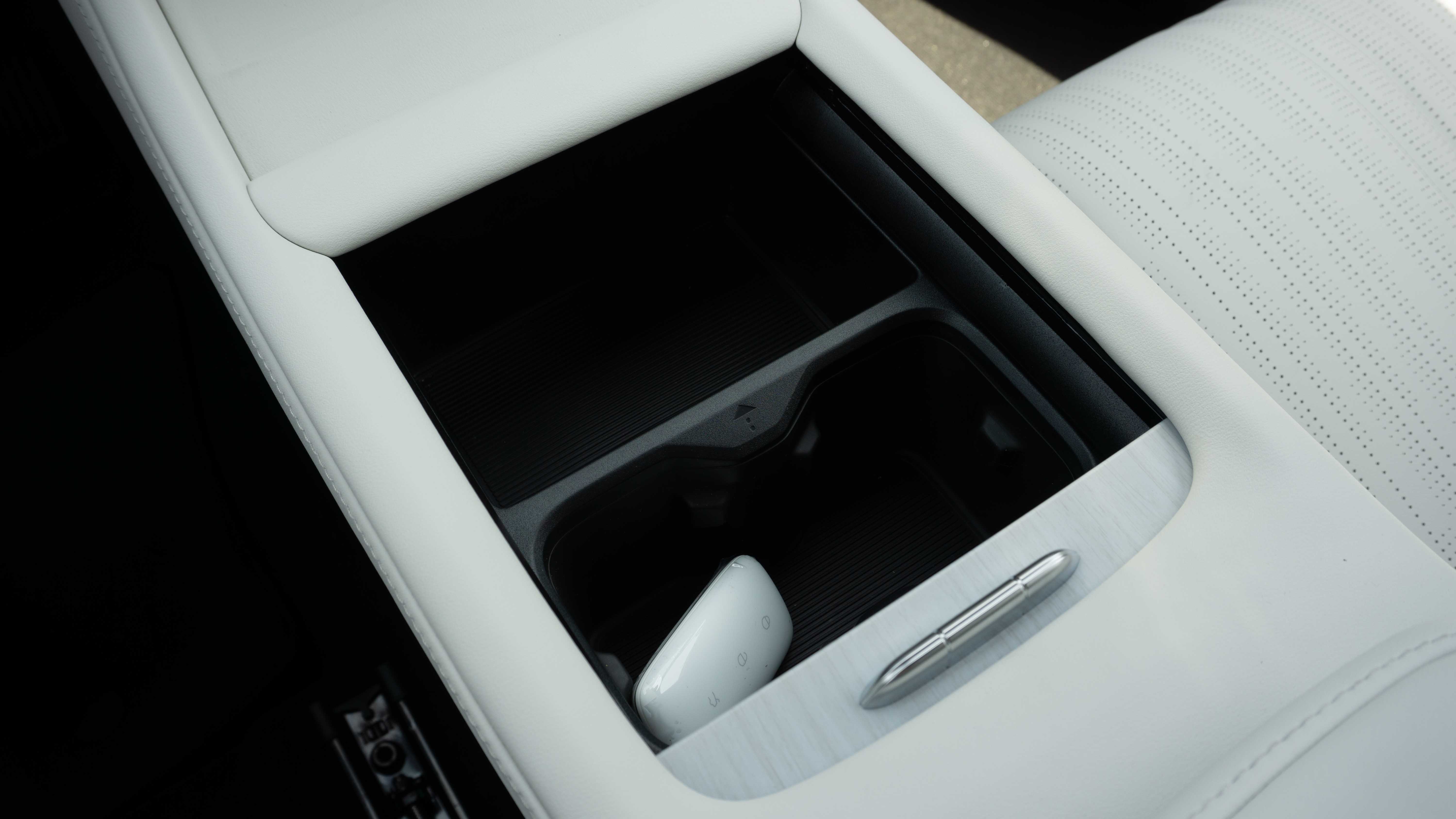

As a hybrid model that accommodates a 3-speed DHT gearbox, the space under the armrest cannot adopt the currently popular hollow-out design.

The passenger side features a 16.2-inch display with a relatively outstanding display area among its peers. What makes it even better is the addition of a privacy screen design to prevent the driver from getting distracted by the passenger display. Due to the presence of the passenger screen, the Galaxy L7 uses a roof-mounted airbag, similar to NIO’s design.
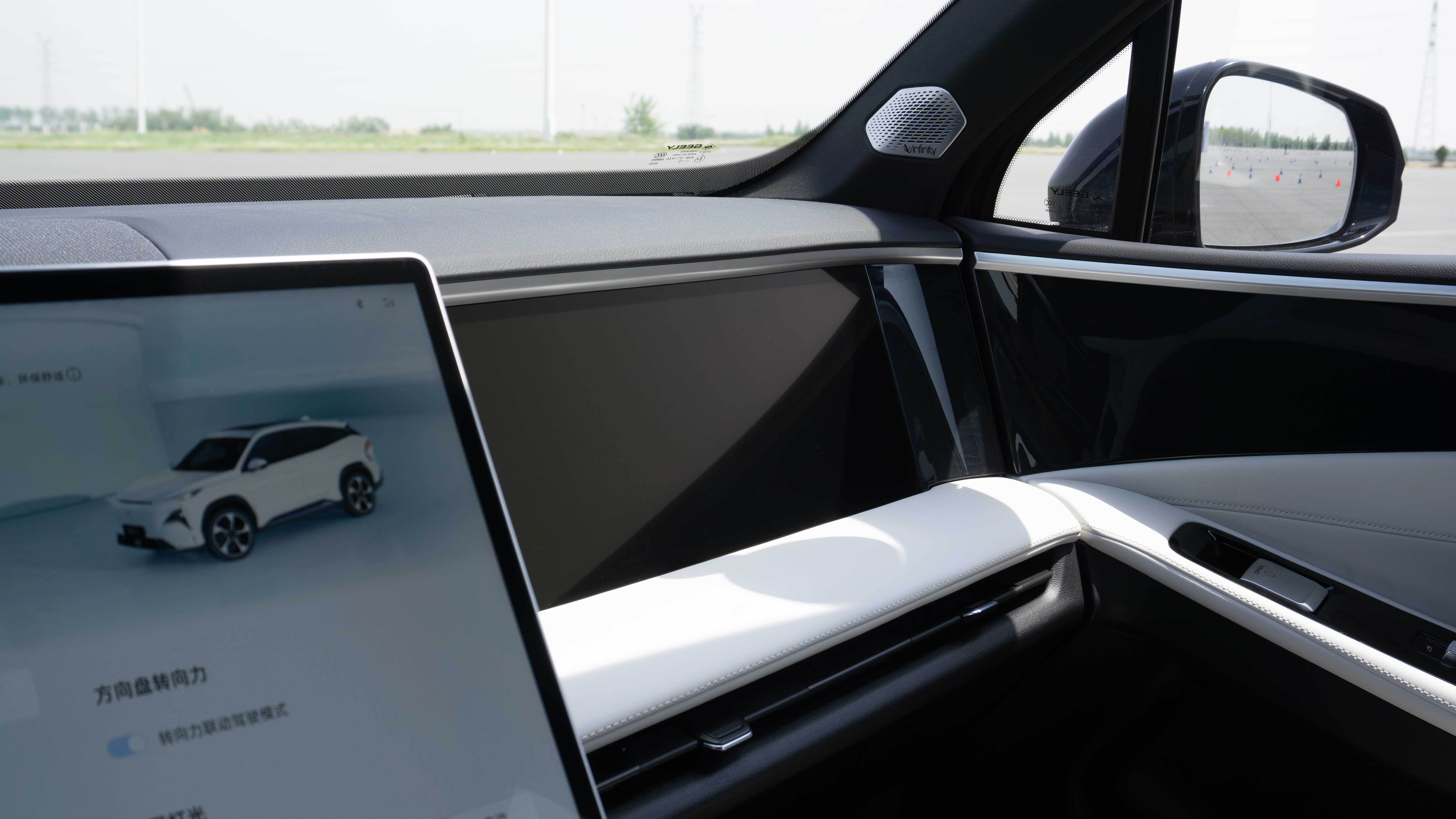
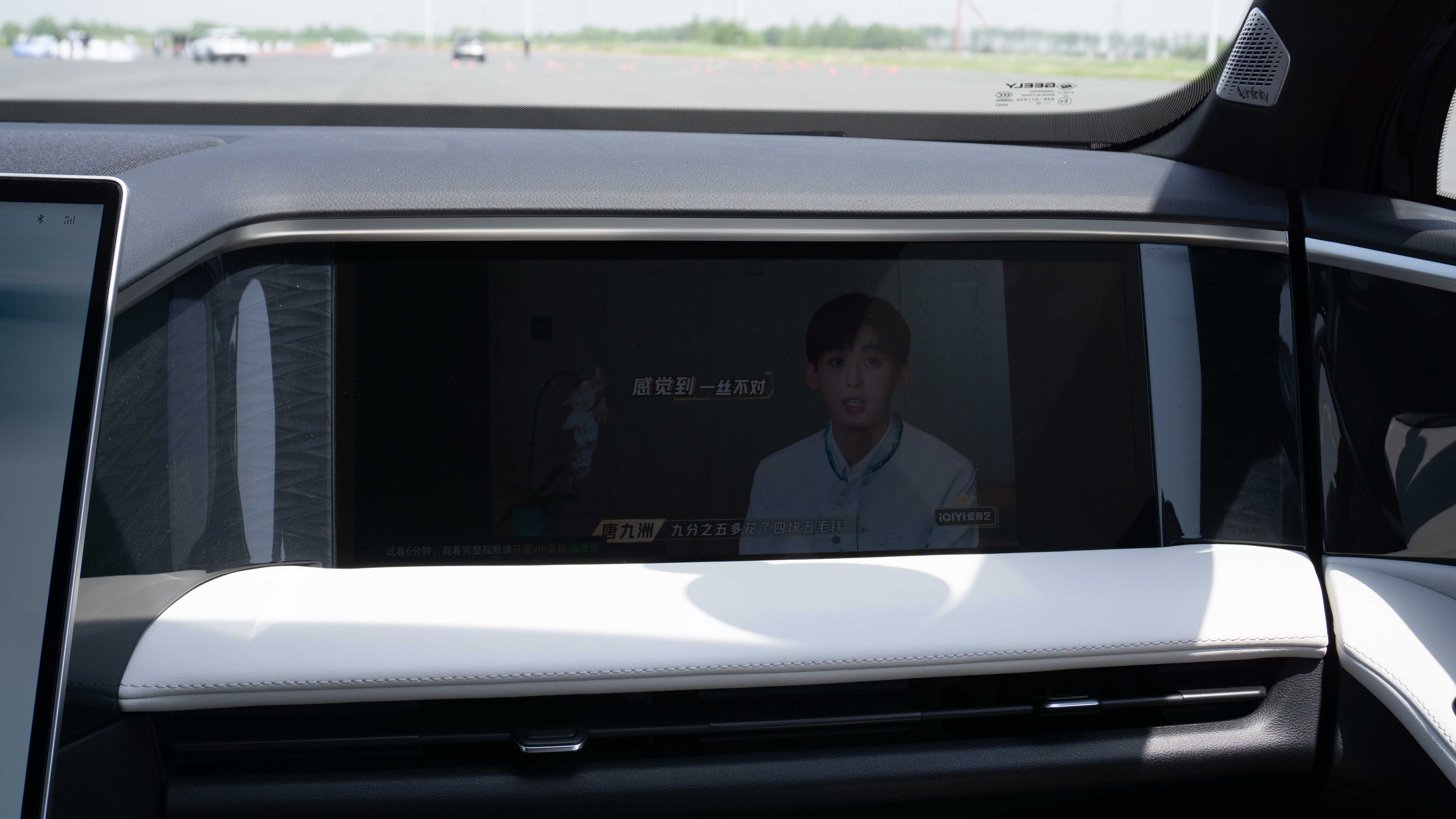 In addition, the front passenger seat is equipped with an extra-long leg rest. When the seatback is reclined naturally to 125° and the leg rest is extended, combined with switching on the front passenger entertainment screen, such a riding experience is rare among its peers.
In addition, the front passenger seat is equipped with an extra-long leg rest. When the seatback is reclined naturally to 125° and the leg rest is extended, combined with switching on the front passenger entertainment screen, such a riding experience is rare among its peers.
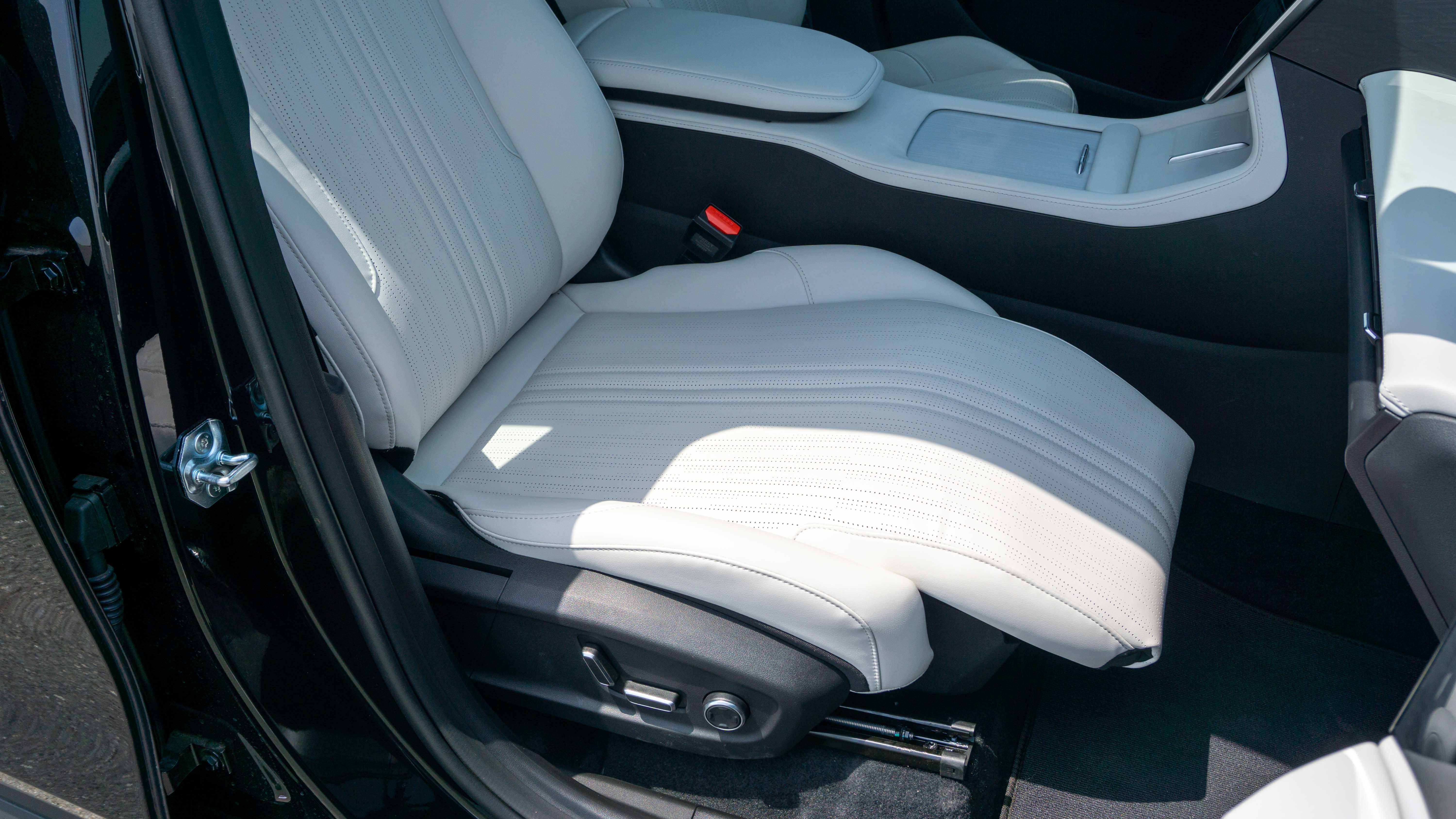
Regarding the seats, the Galaxy L7’s front seat cushion is 53 cm in length and the height is adjustable between 30-34 cm, accommodating the majority of drivers. The 53 cm cushion length provides comfortable thigh support.
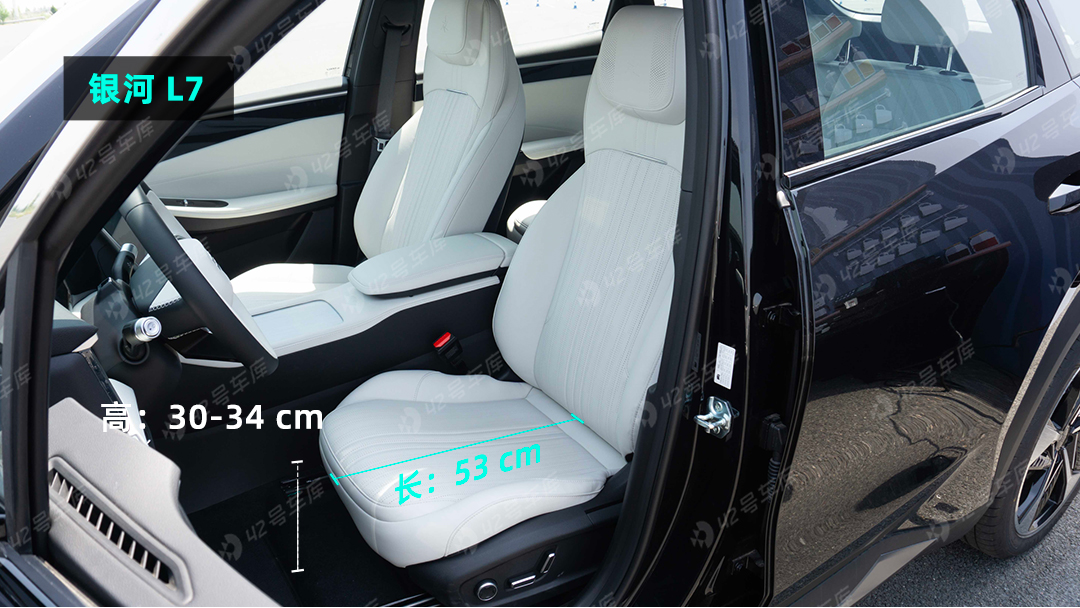
Apart from the conventional ventilation, heating, and massage features, the front seats surprisingly offer a therapeutic option as well. After trying it briefly, I couldn’t discern a significant difference from the massage function with my eyes closed. It’s possible that the difference becomes noticeable during long-distance driving or prolonged use, which I’ll further explore during our road test.

In terms of interior space, the Galaxy L7, positioned as a compact SUV, boasts a wheelbase of 2,785 mm, which is quite spacious in its class. I stand 175 cm tall and weigh 78 kg, and even with the front row adjusted to my ideal driving position, there is an ample legroom of more than one palm-width in the rear row.

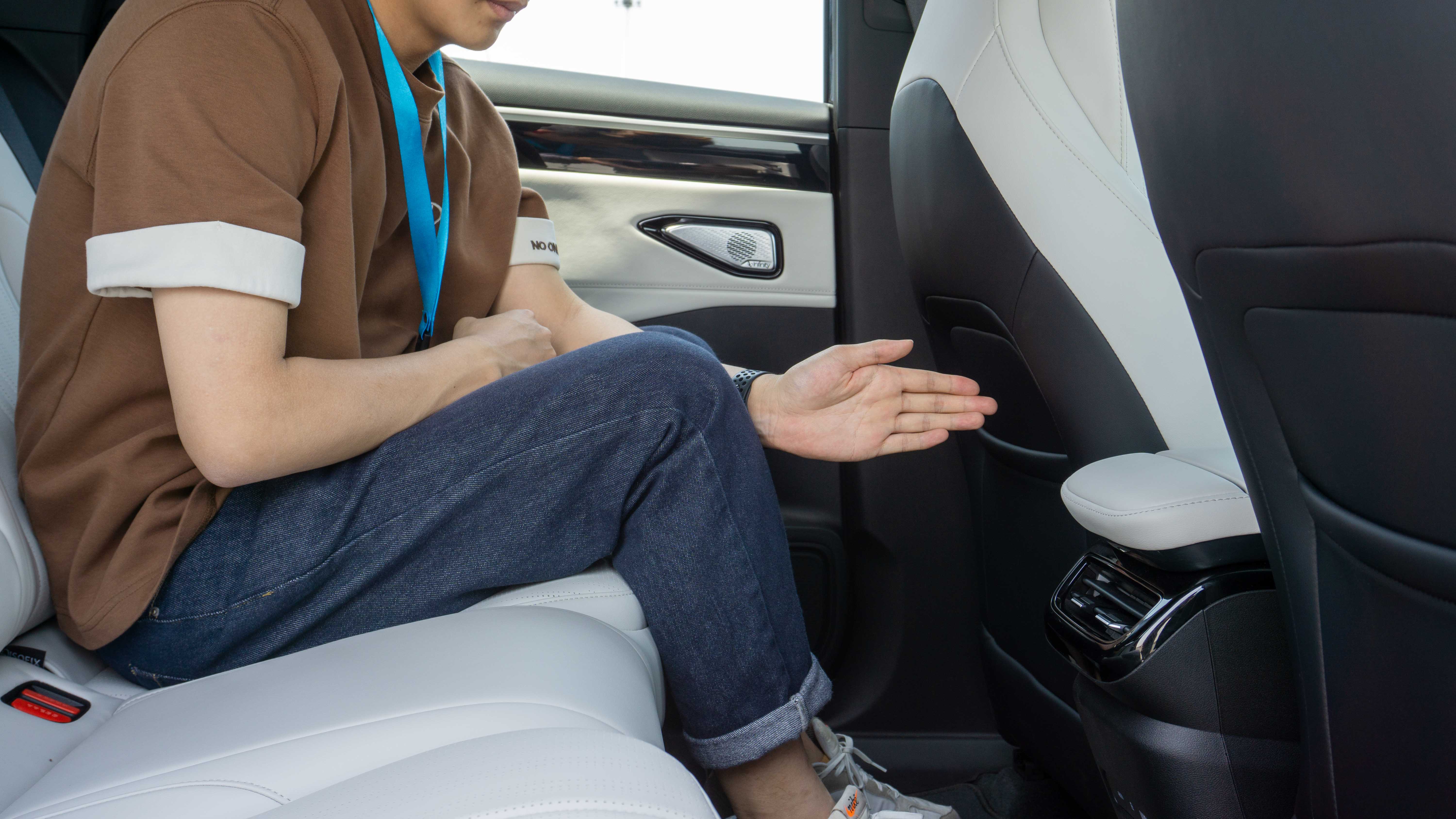
When seated naturally, the moonroof extends directly above the rear passengers’ heads, providing a headroom equivalent to two fists. Overall, the rear row offers generous space.


As for riding comfort, the Galaxy L7’s rear seat cushion measures 35 cm high, 53 cm long, and 126 cm wide, all impressive figures. The actual sensation indicates that the cushion filling is relatively soft, offering a comfortable experience. Moreover, the rear middle floor is completely flat, so even when accommodating three passengers, it doesn’t feel too cramped.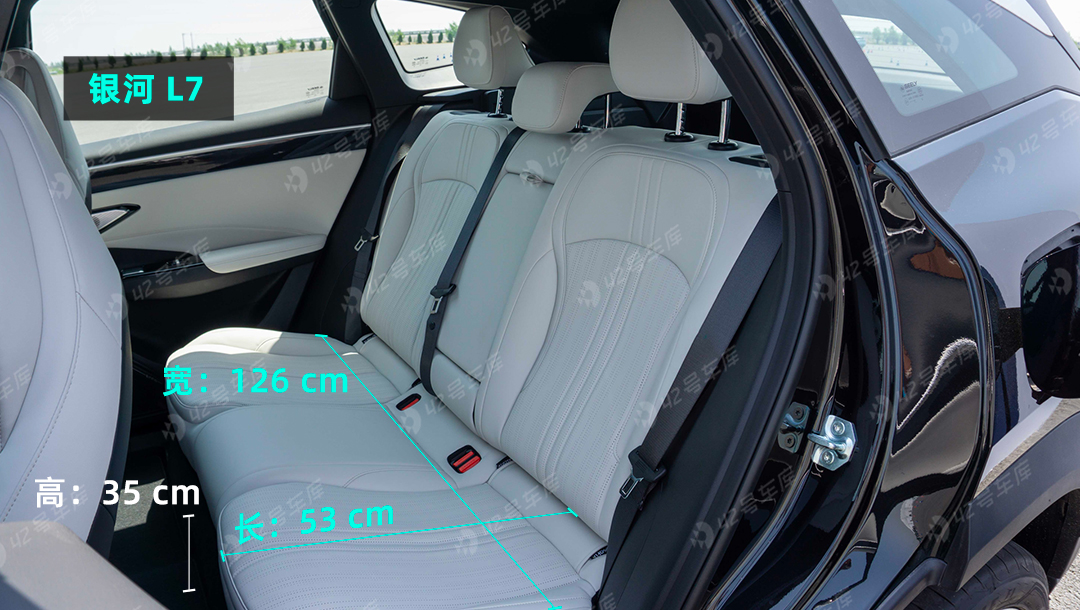

Considering the comfort of Galaxy L7, it meets the standards of a family-oriented A-class SUV in terms of experience, design, and practicality. The abundant cabin configuration and A+ class space have also made Galaxy L7’s competitiveness comparable to higher-level products.
Exterior Review
The dimensions of Galaxy L7 are 4,700 × 1,905 × 1,685 mm, with a wheelbase of 2,785 mm, belonging to the standard A-class SUV. Its overall size is similar to BYD Song PLUS, which measures 4,705 x 1,890 x 1,680 mm, with a wheelbase of 2,765 mm.
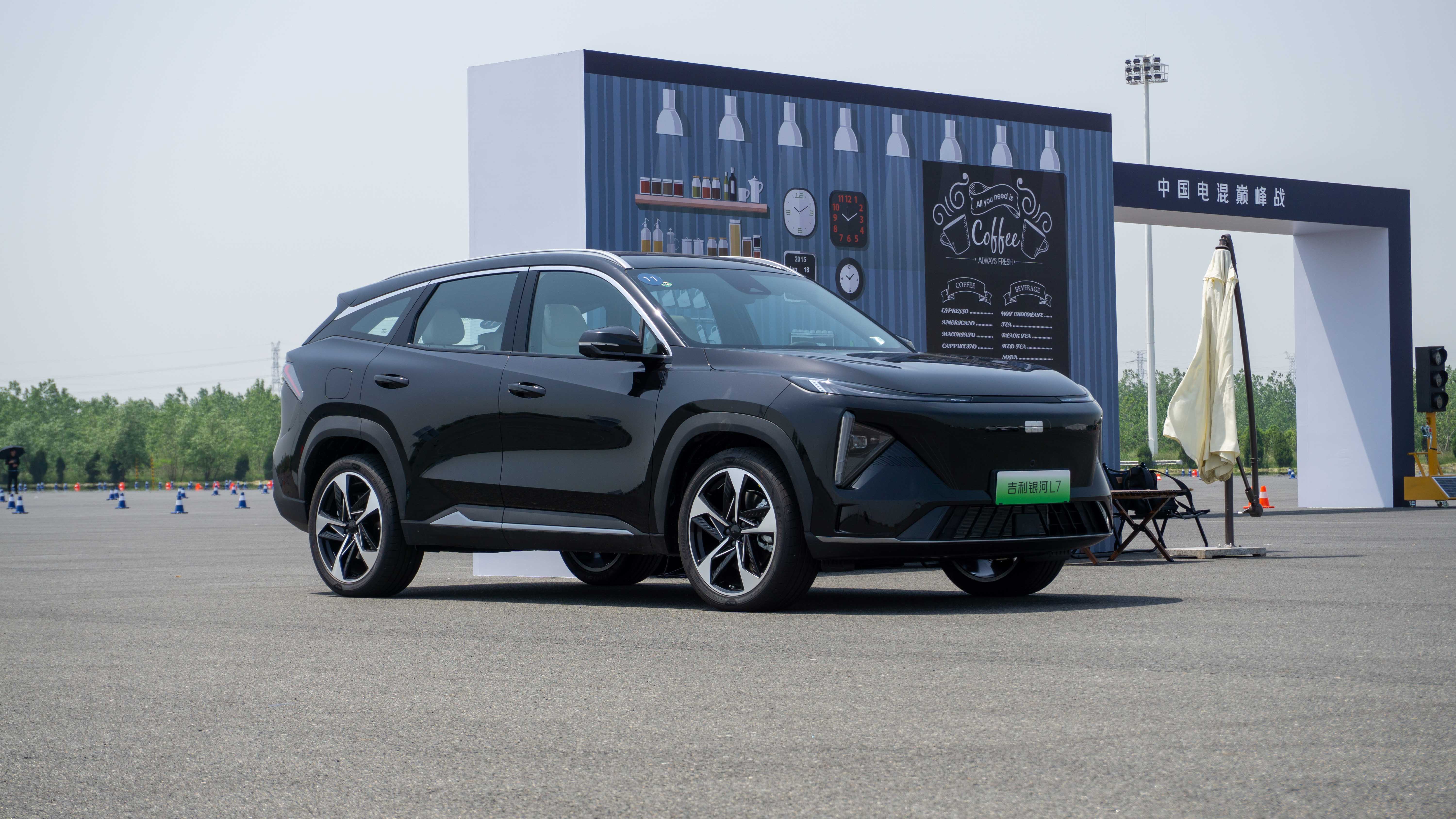
The consumer group of A-class SUVs in this segment is becoming younger and younger, so the design style of Galaxy L7 is also geared towards a youthful approach. The front face features a split-type lamp group with a closed grille design, making it instantly recognizable as an electric vehicle. Although the overall design style has some resemblance to Bo Yue L, the differences in details make Galaxy L7 more unique.
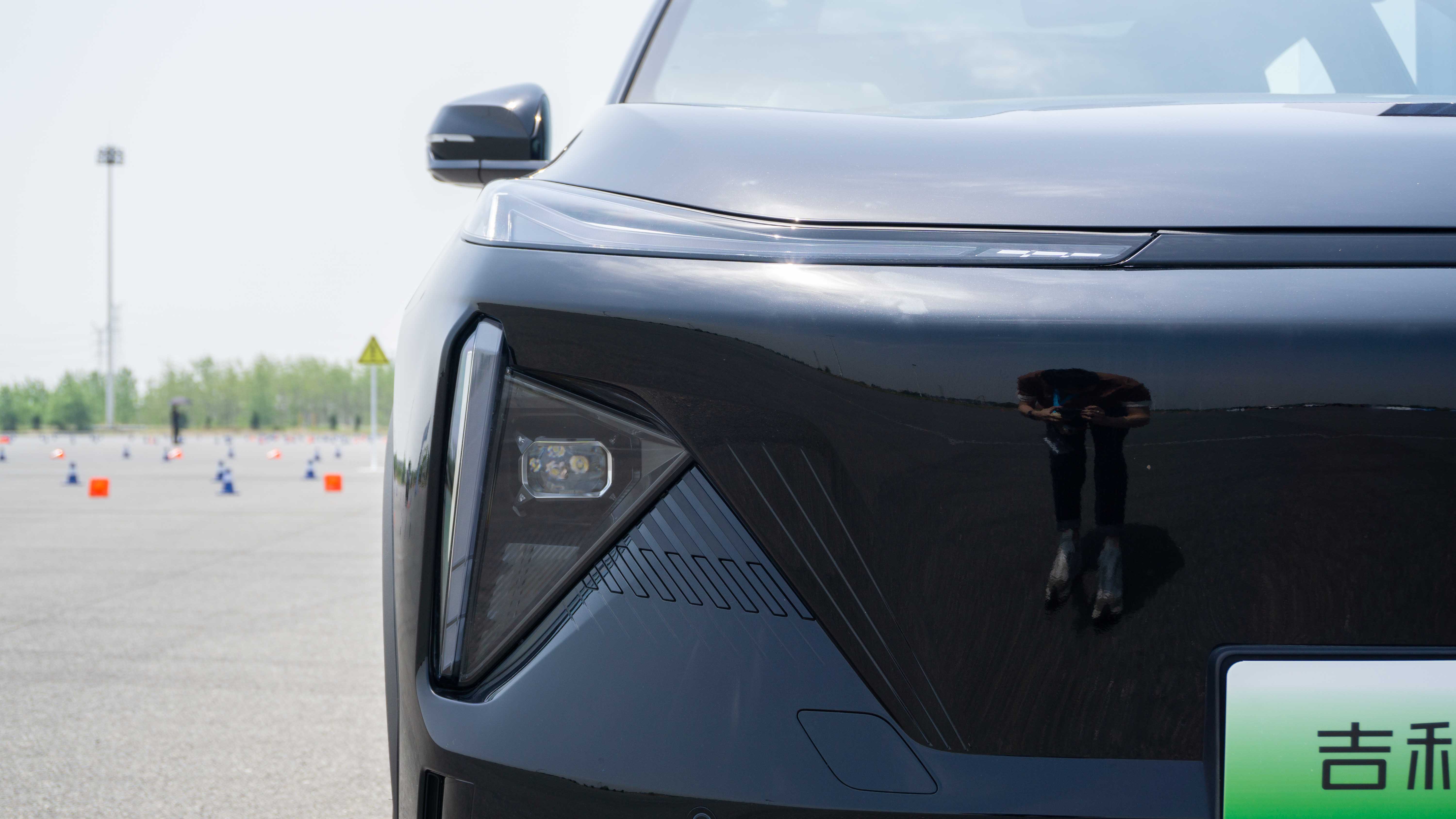
Including the segmented block-shaped fishbone LED tail lights, which are quite similar to Lamborghini’s Y-shaped tail lights. Galaxy L7 extends the tail light group all the way to the lower part of the vehicle’s side fender, creating a decent sense of sportiness.

Additionally, it’s worth mentioning the trunk space of Galaxy L7. The measured trunk depth is 97.5 cm, width 106 cm, and the widest part reaches up to 130 cm. Its space is almost on par with many mid-size SUVs, ensuring practicality for everyday family use.
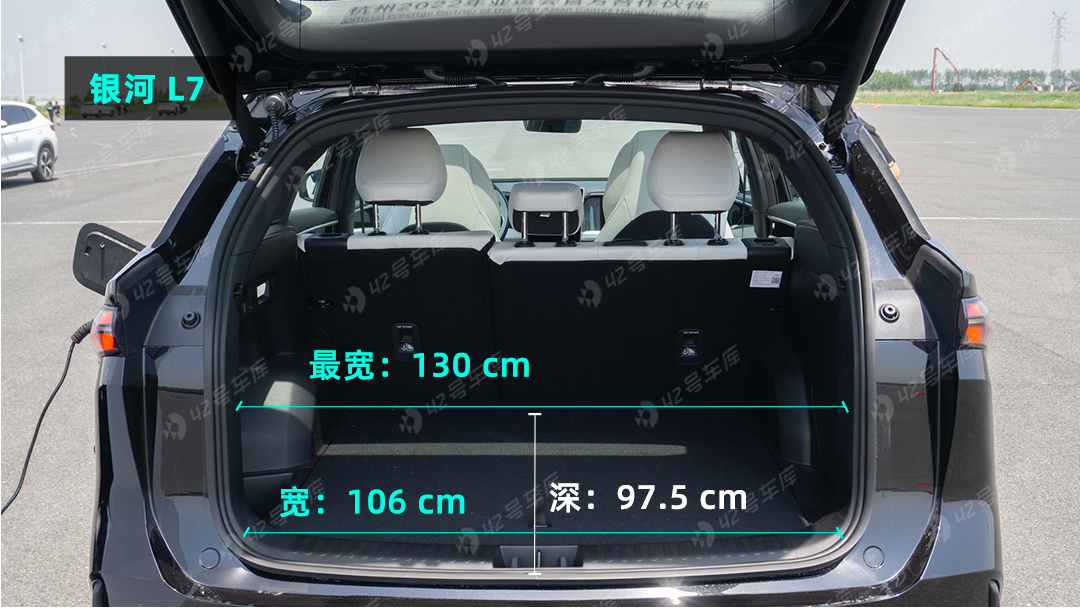
Overall, the exterior of Galaxy L7 remains relatively sleek, and with the addition of a sporty style, it not only establishes its unique presence among competitors but also appeals to younger consumers.## In Conclusion
For A-segment SUVs priced within the 150,000-range, the primary demand is for a cost-effective family-oriented SUV. Once the price reaches the 200,000-range, besides affordability, a certain level of quality is expected. Therefore, for the Galaxy L7, which is priced under 200,000, ensuring home-use comfort is essential, while at the same time meeting the requirements for configuration, power, and handling to boost its market competitiveness, showing just how intense competition is in this segment.
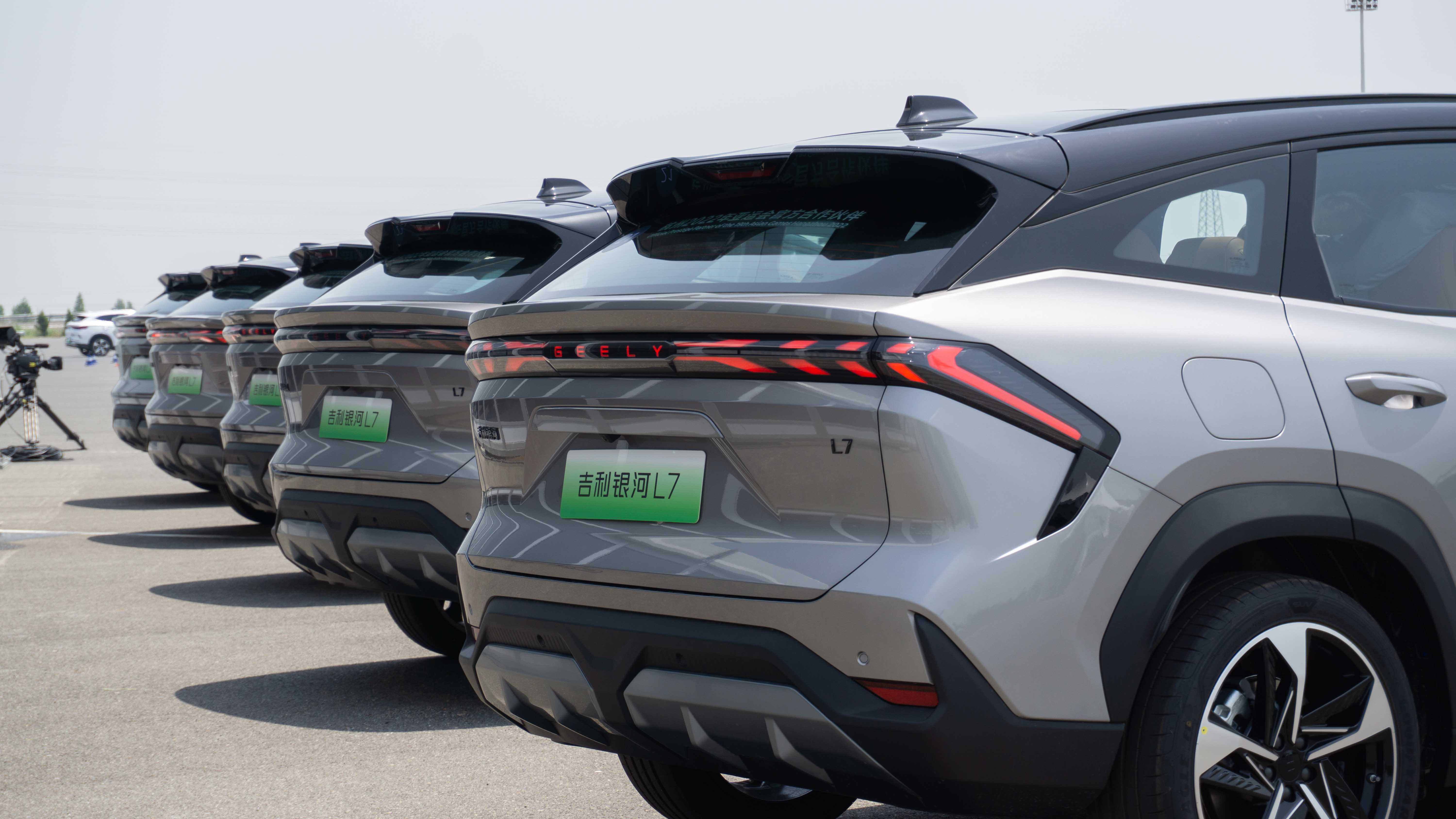
Currently, the sales benchmark in the A-segment SUV market is the BYD Song family, which achieved sales of 475,000 units in 2022, with a price tag of around 150,000, accounting for an astonishing 25.5% of BYD’s total sales. In addition to BYD Song, this 100,000 – 200,000 range is also dominated by numerous internal-combustion vehicles. As the first model in the Galaxy series, the L7 confidently enters this fiercely competitive market. On one hand, it has the necessary features and quality; on the other hand, Geely has confidence in L7’s pricing, which might bring surprises to consumers.
This article is a translation by ChatGPT of a Chinese report from 42HOW. If you have any questions about it, please email bd@42how.com.
